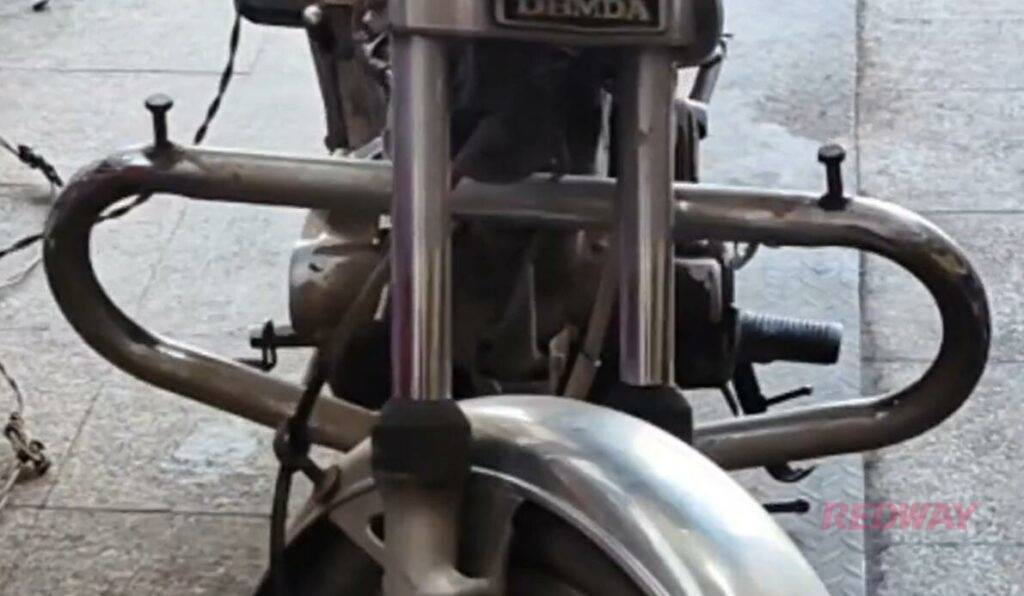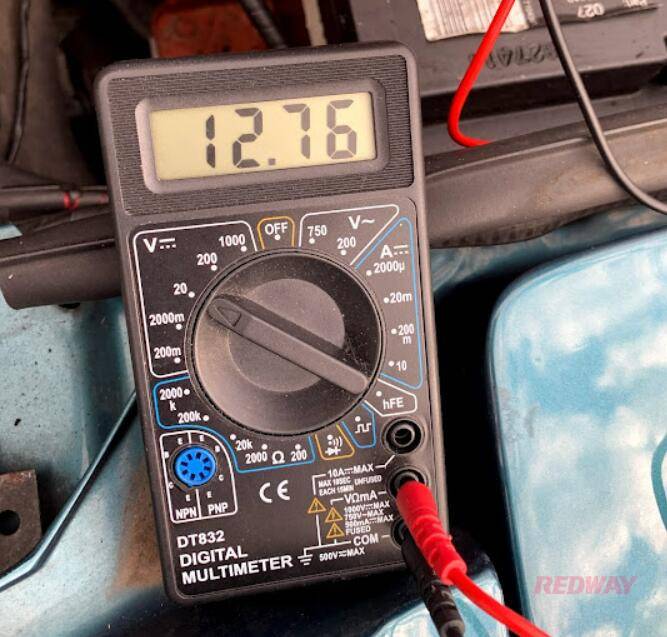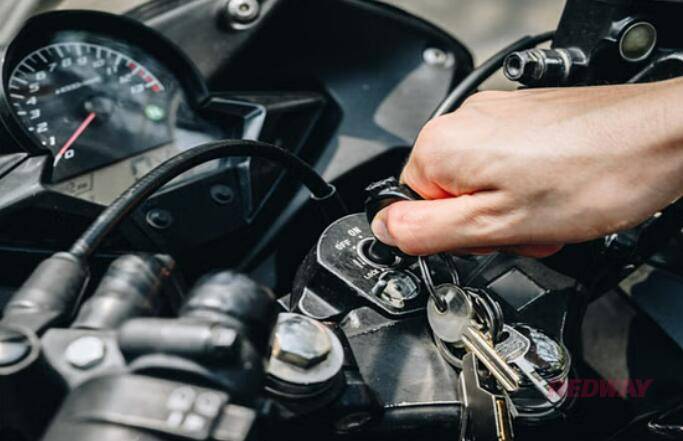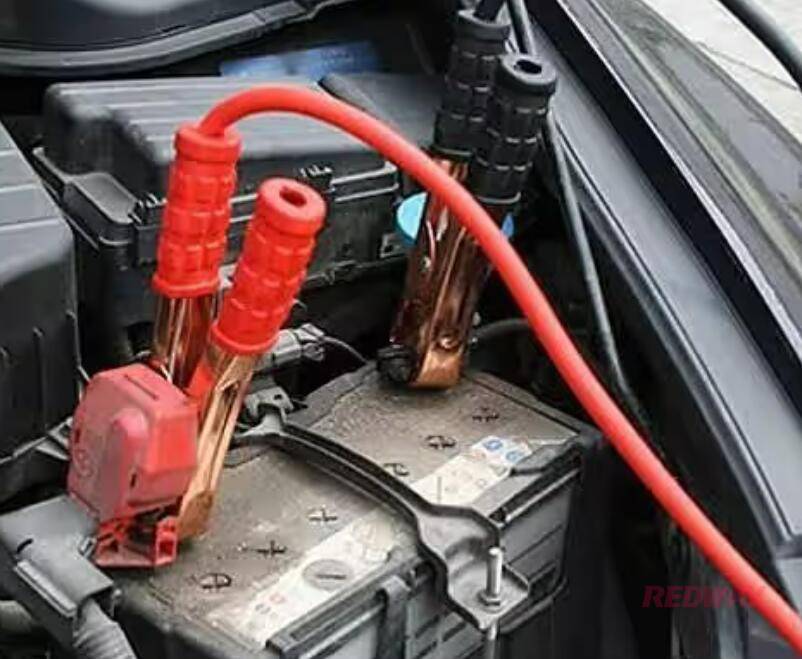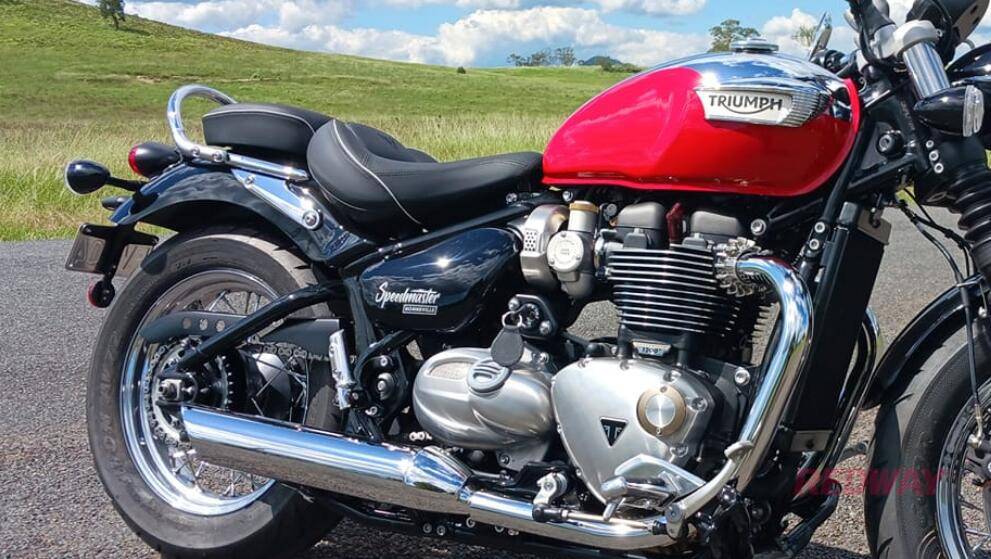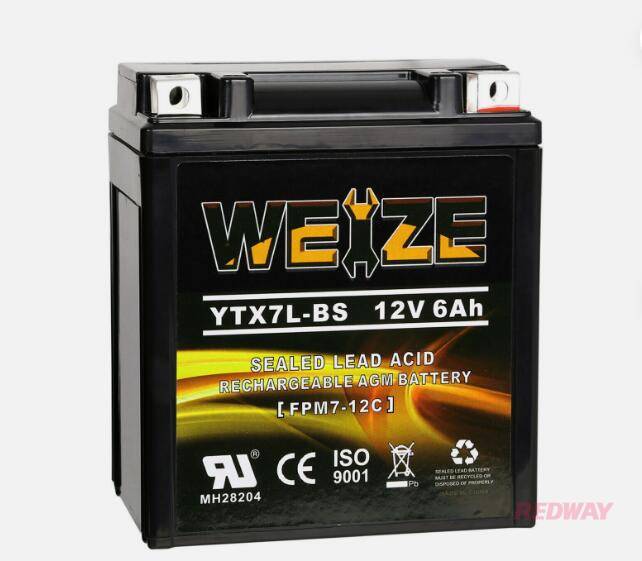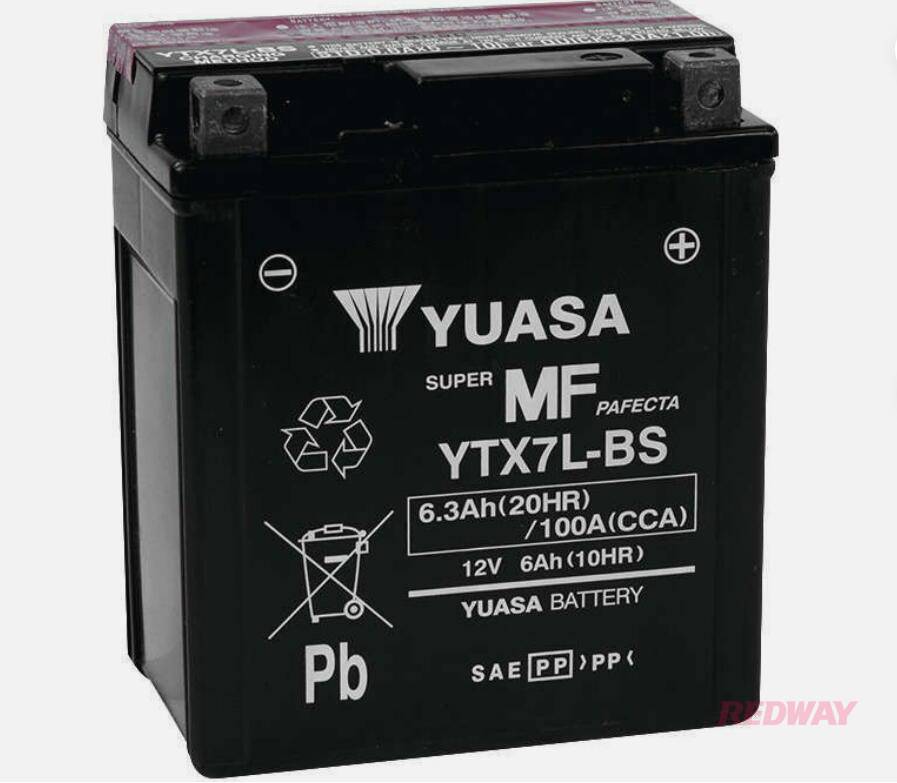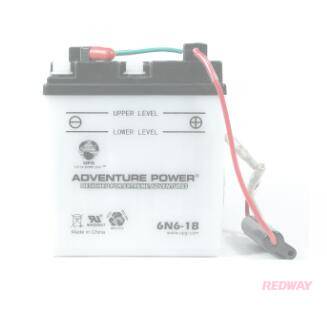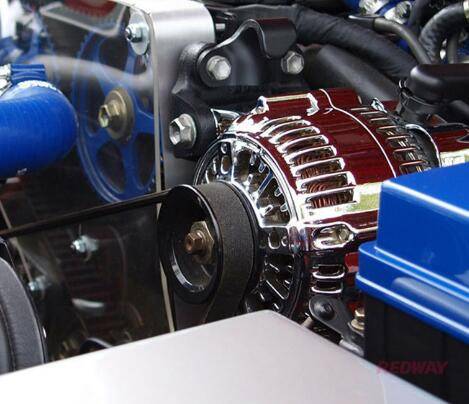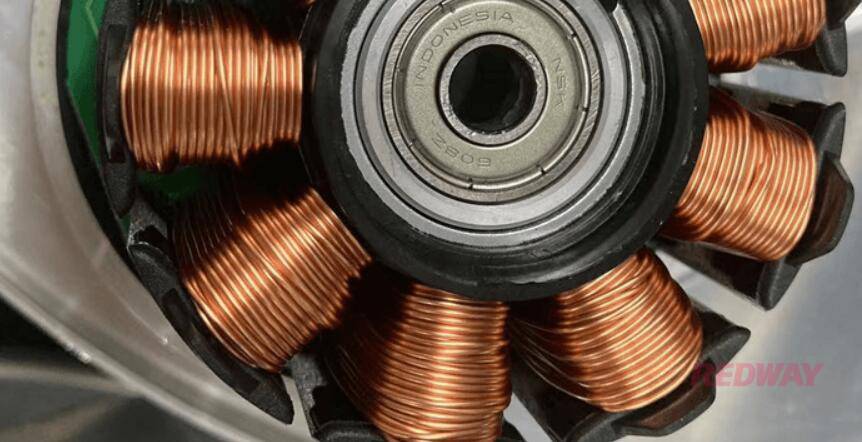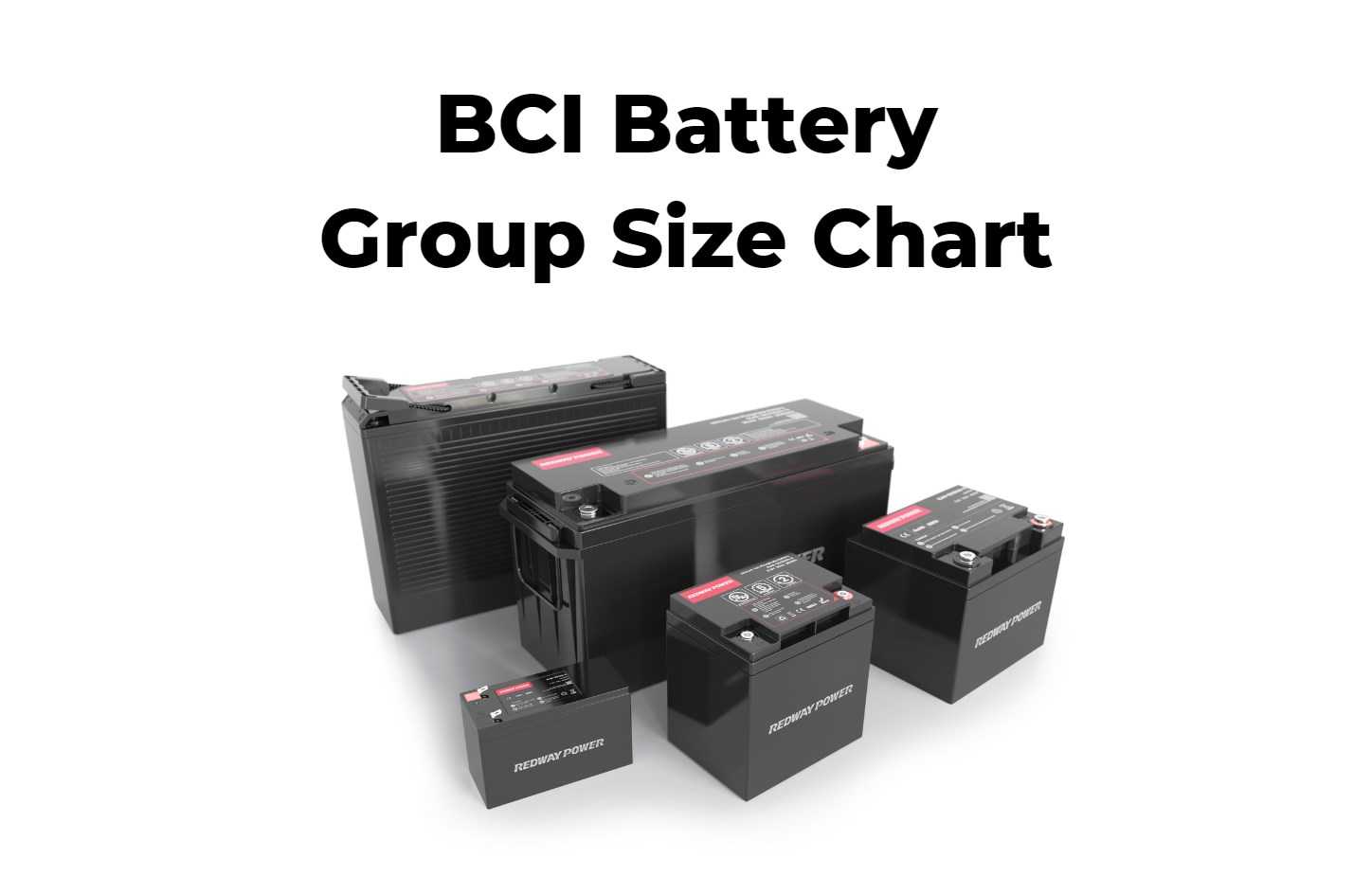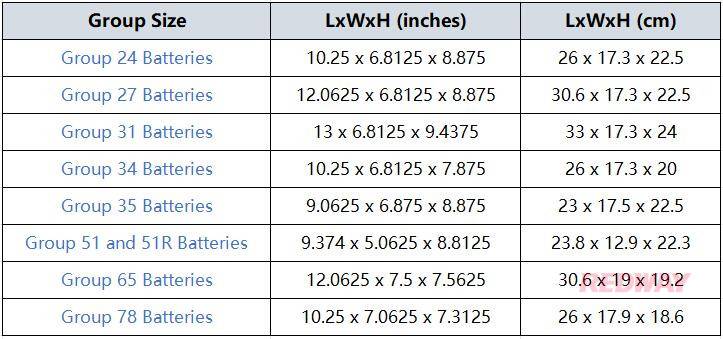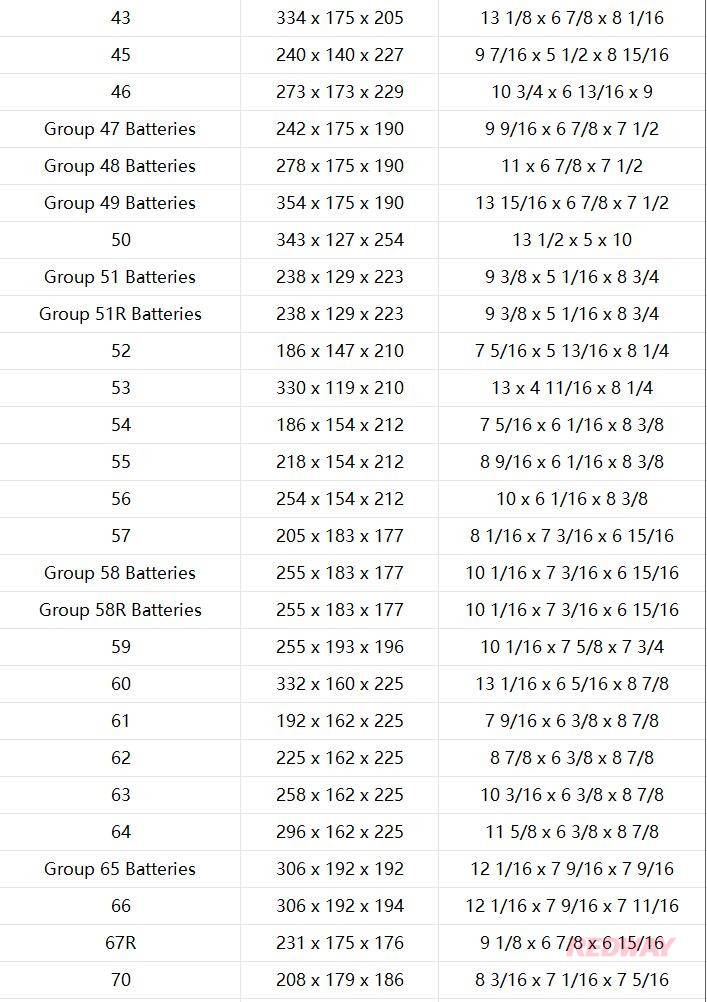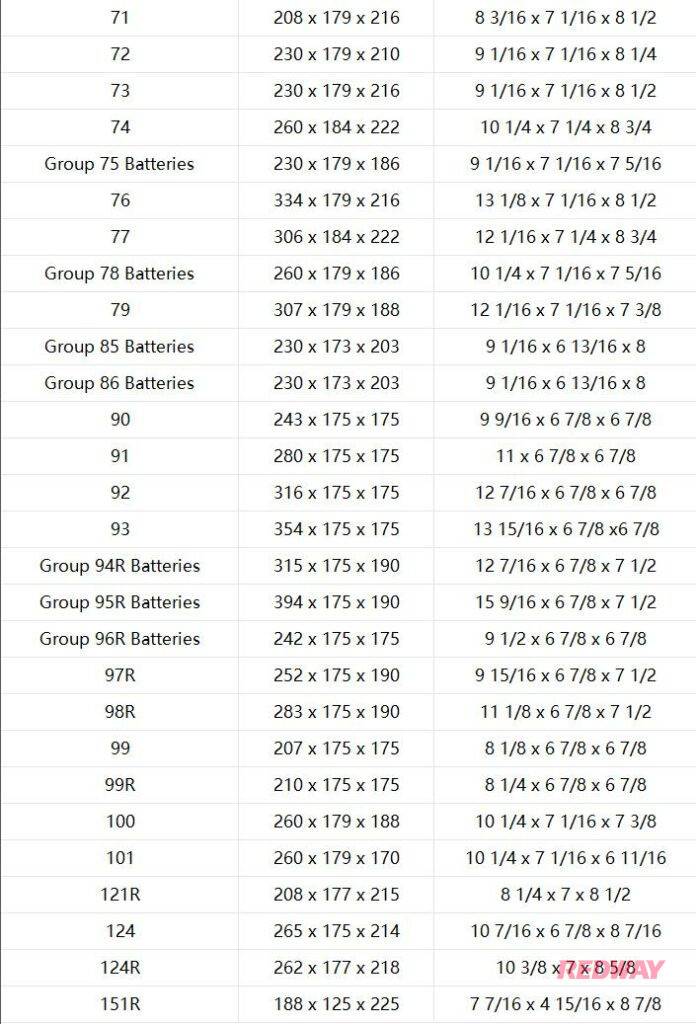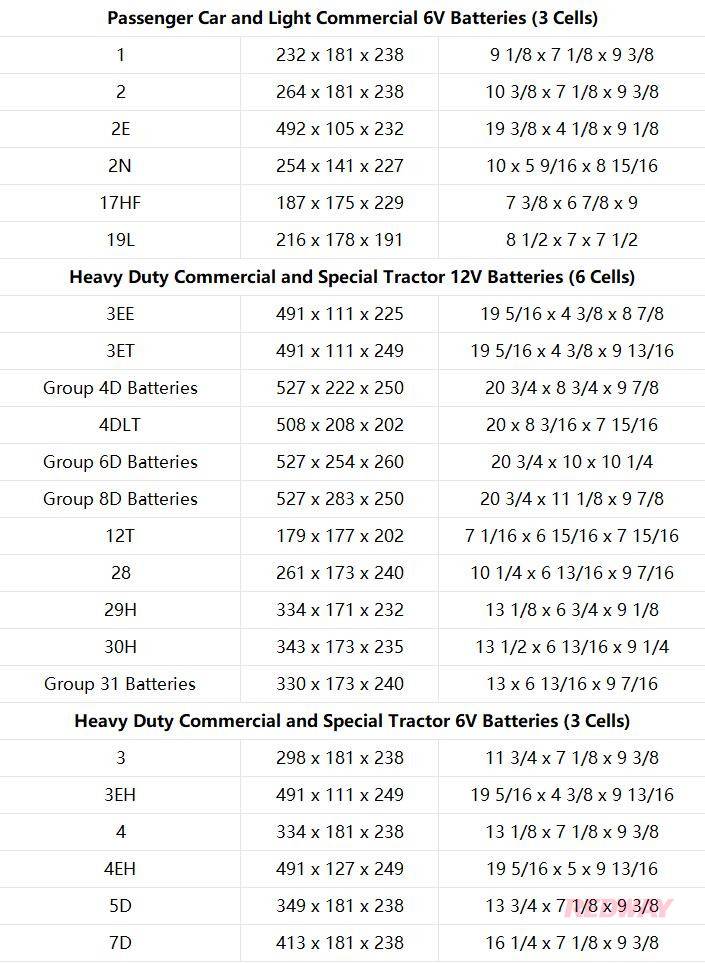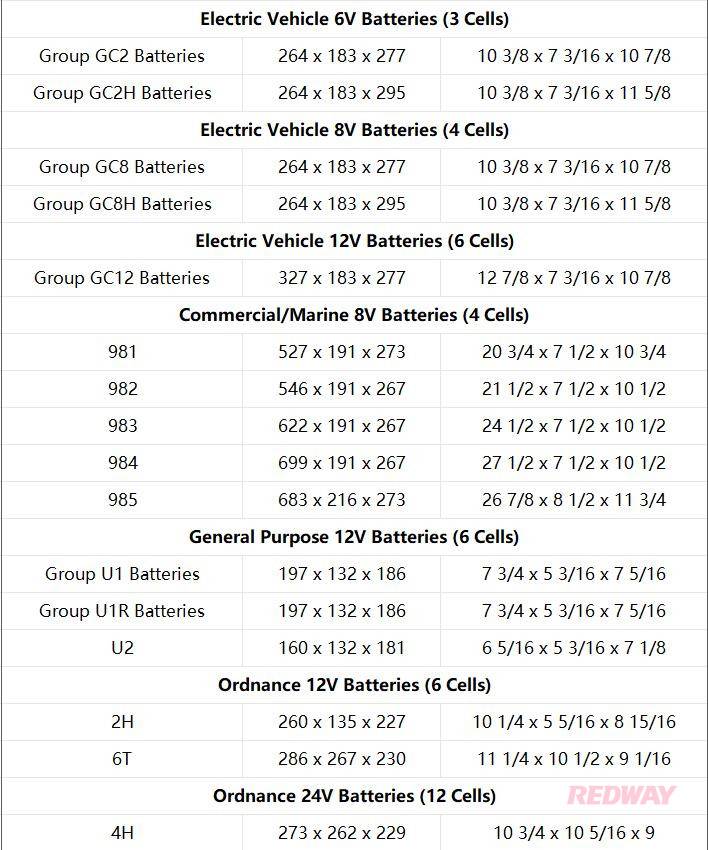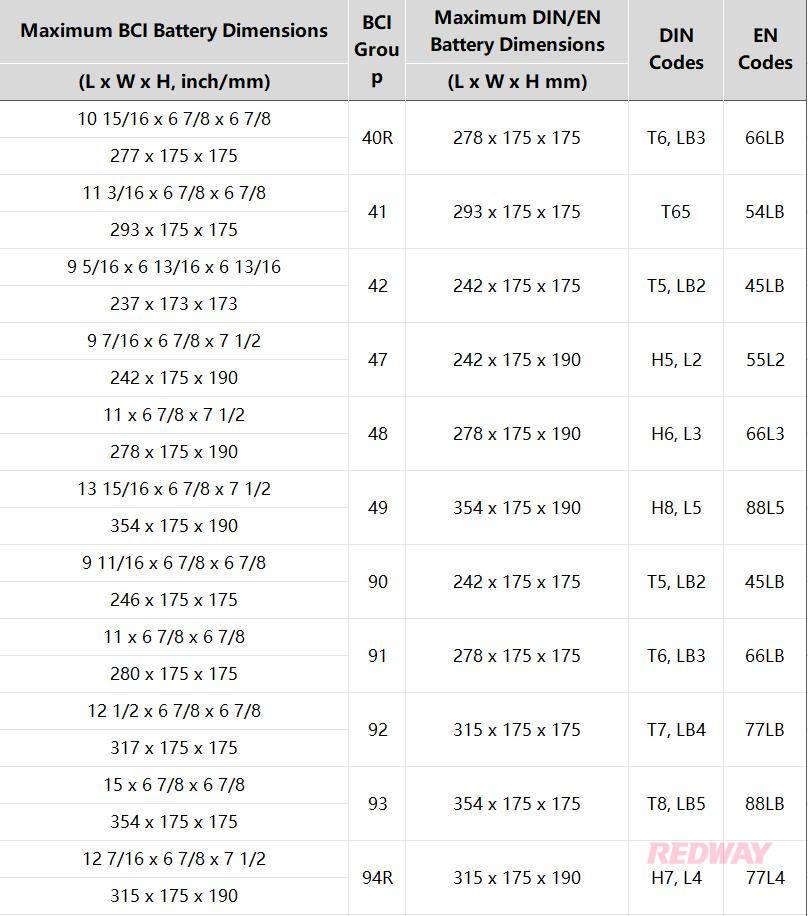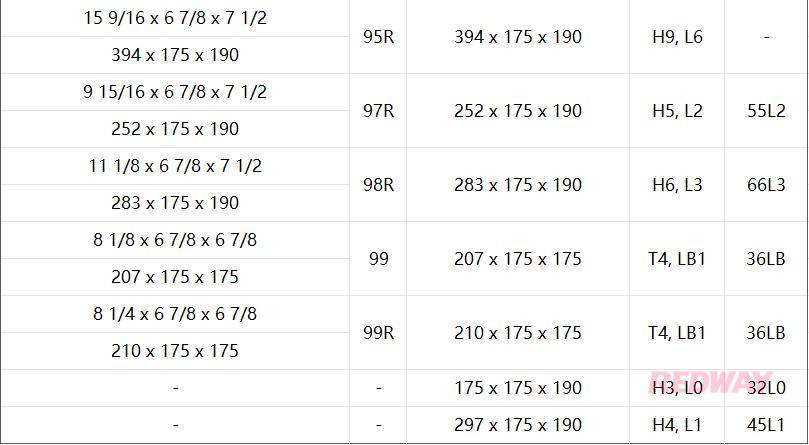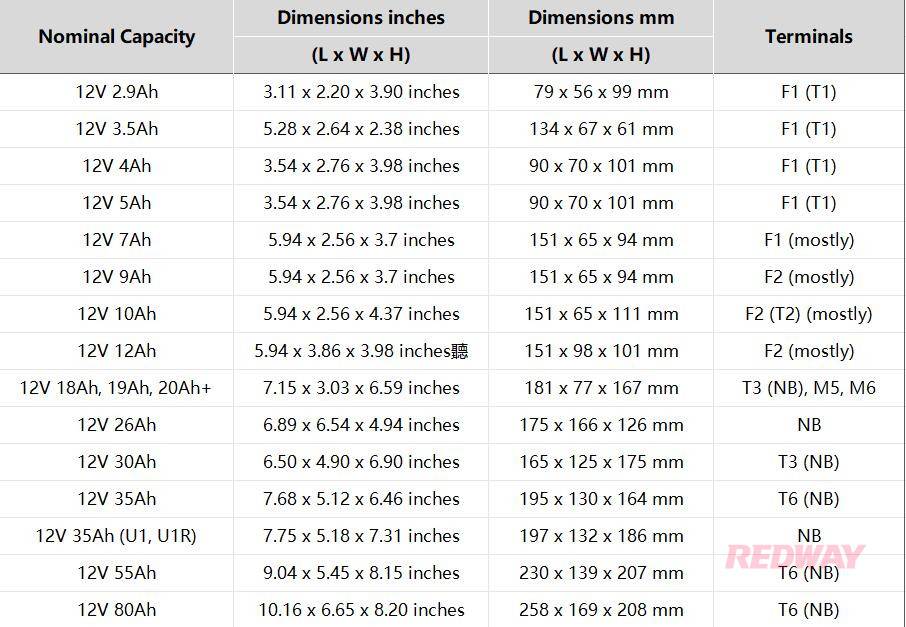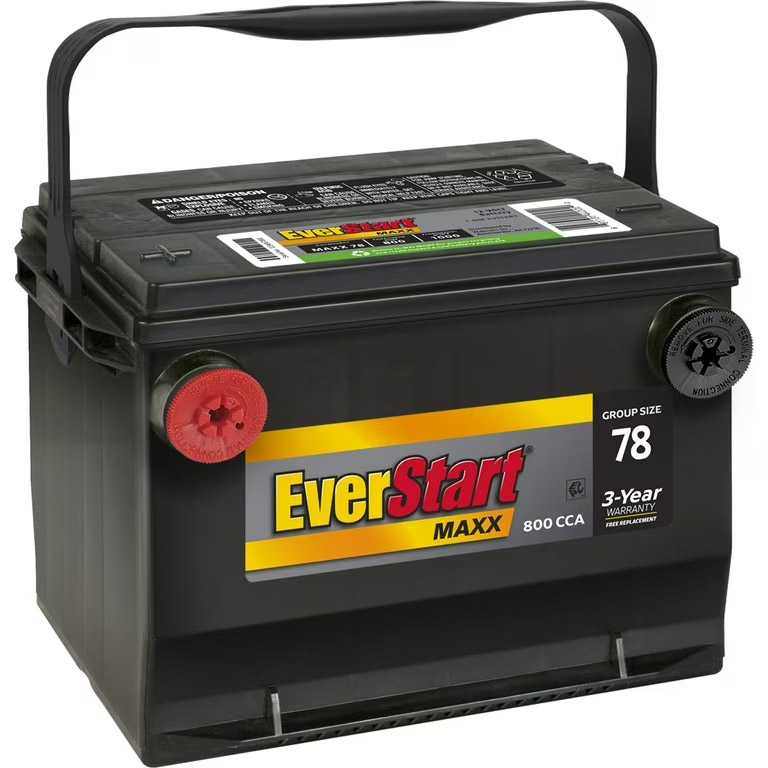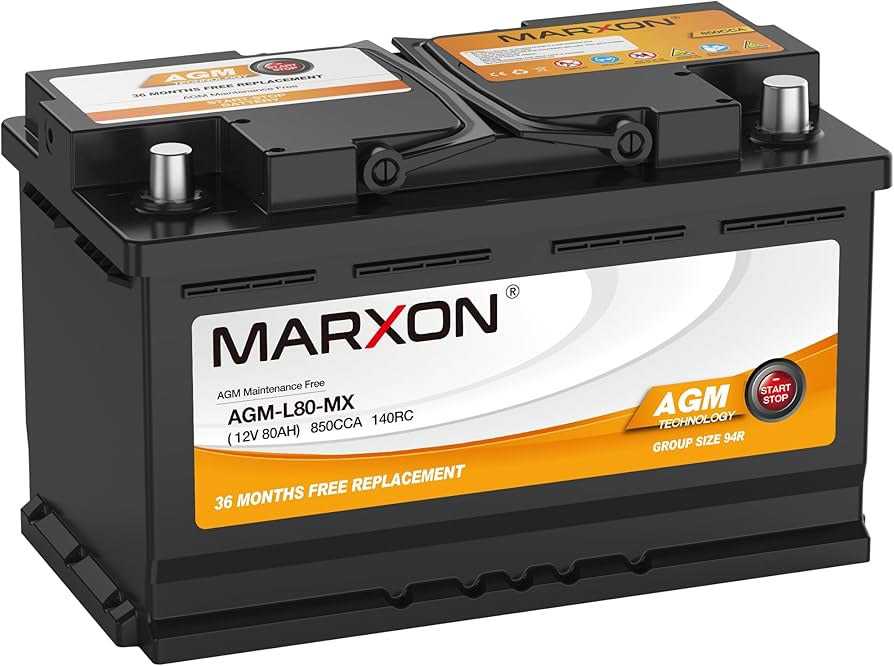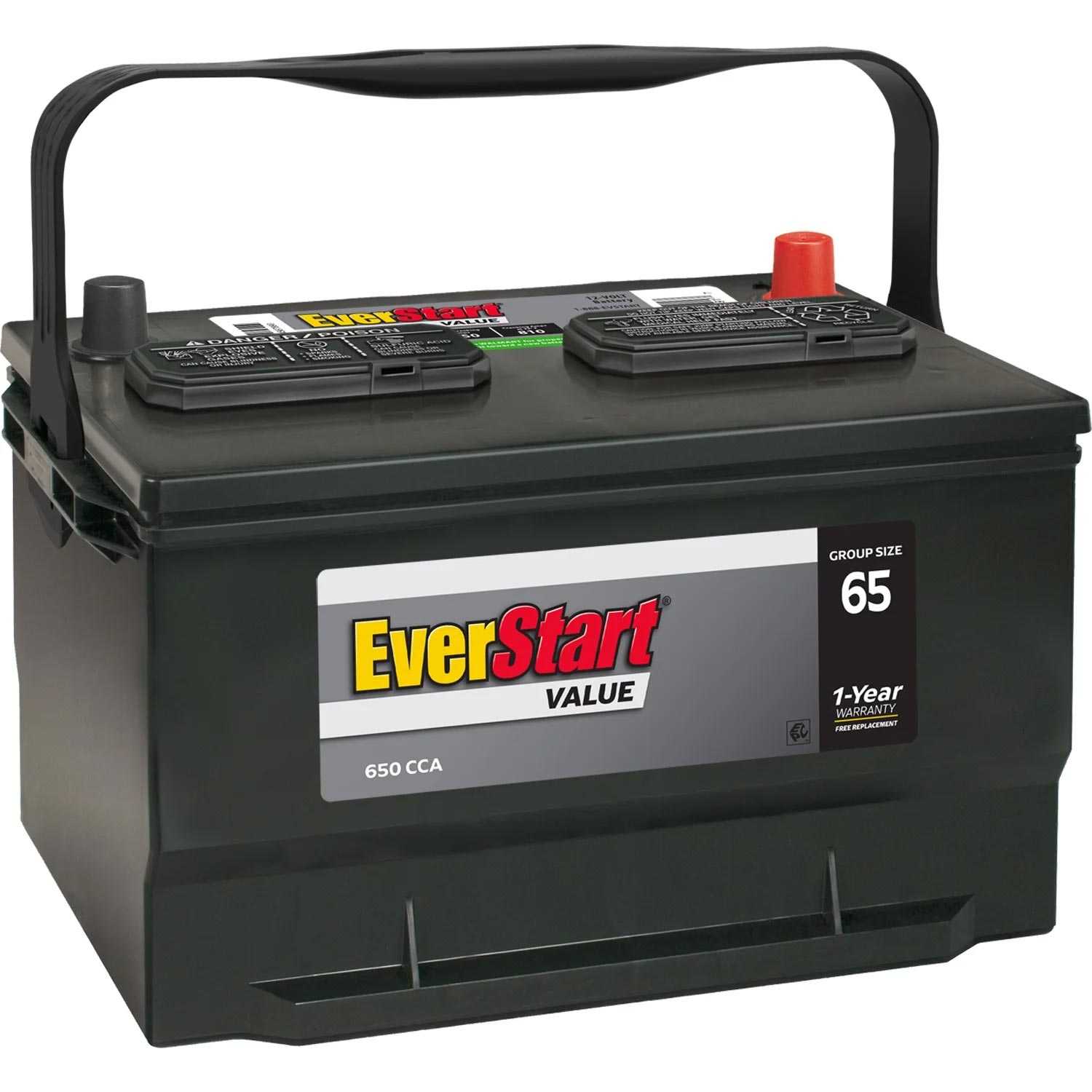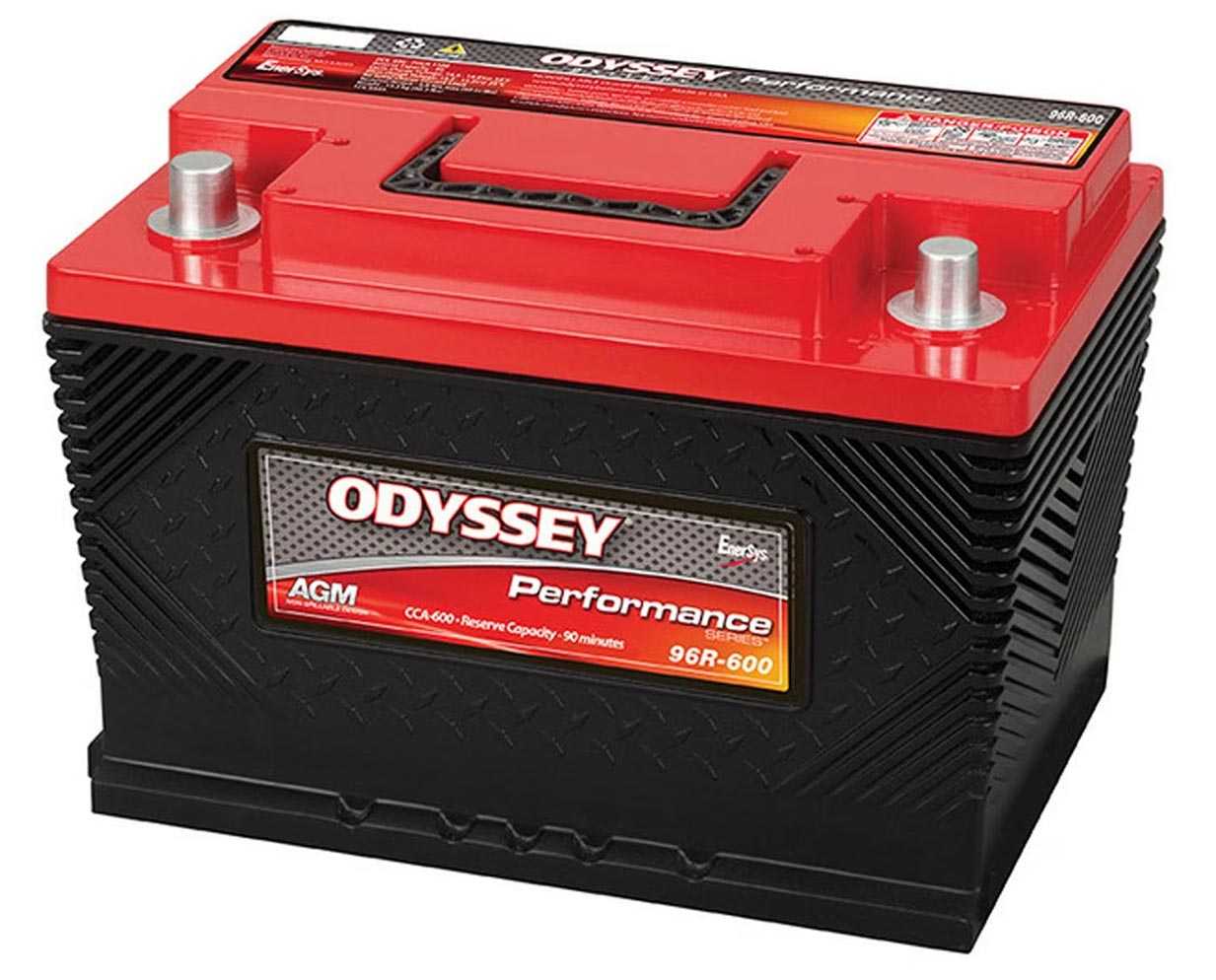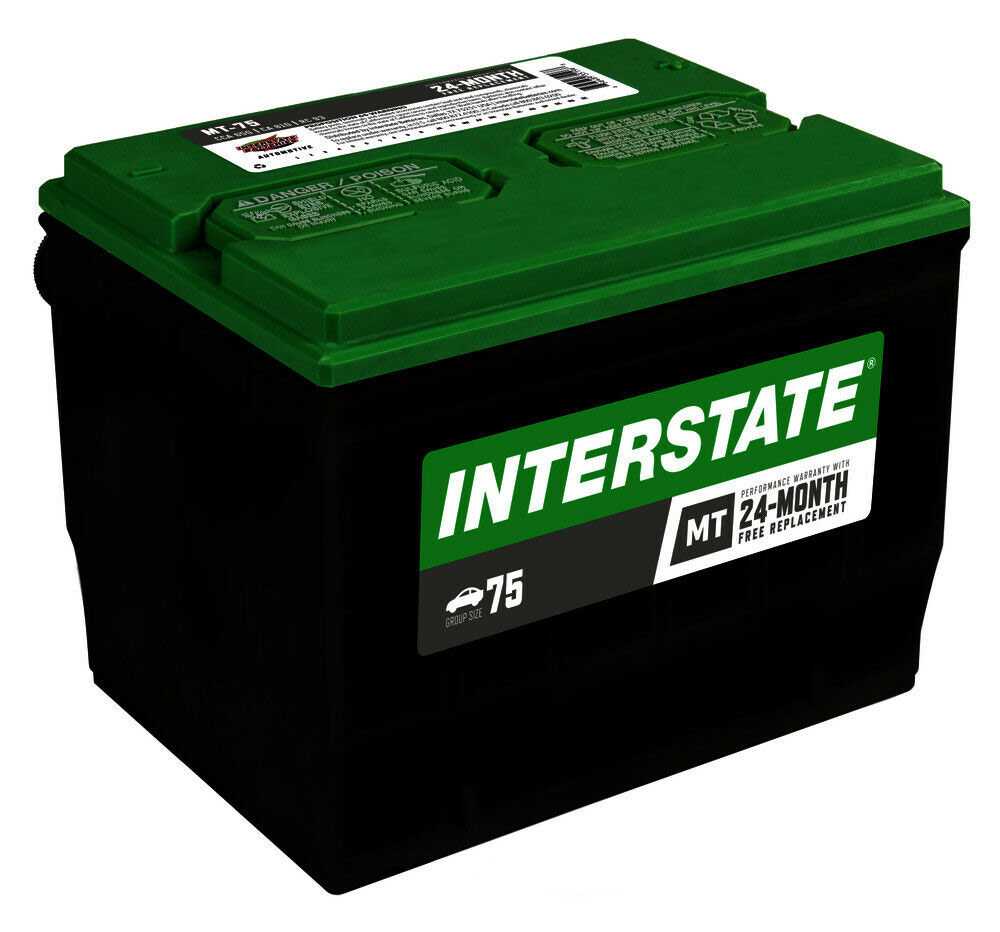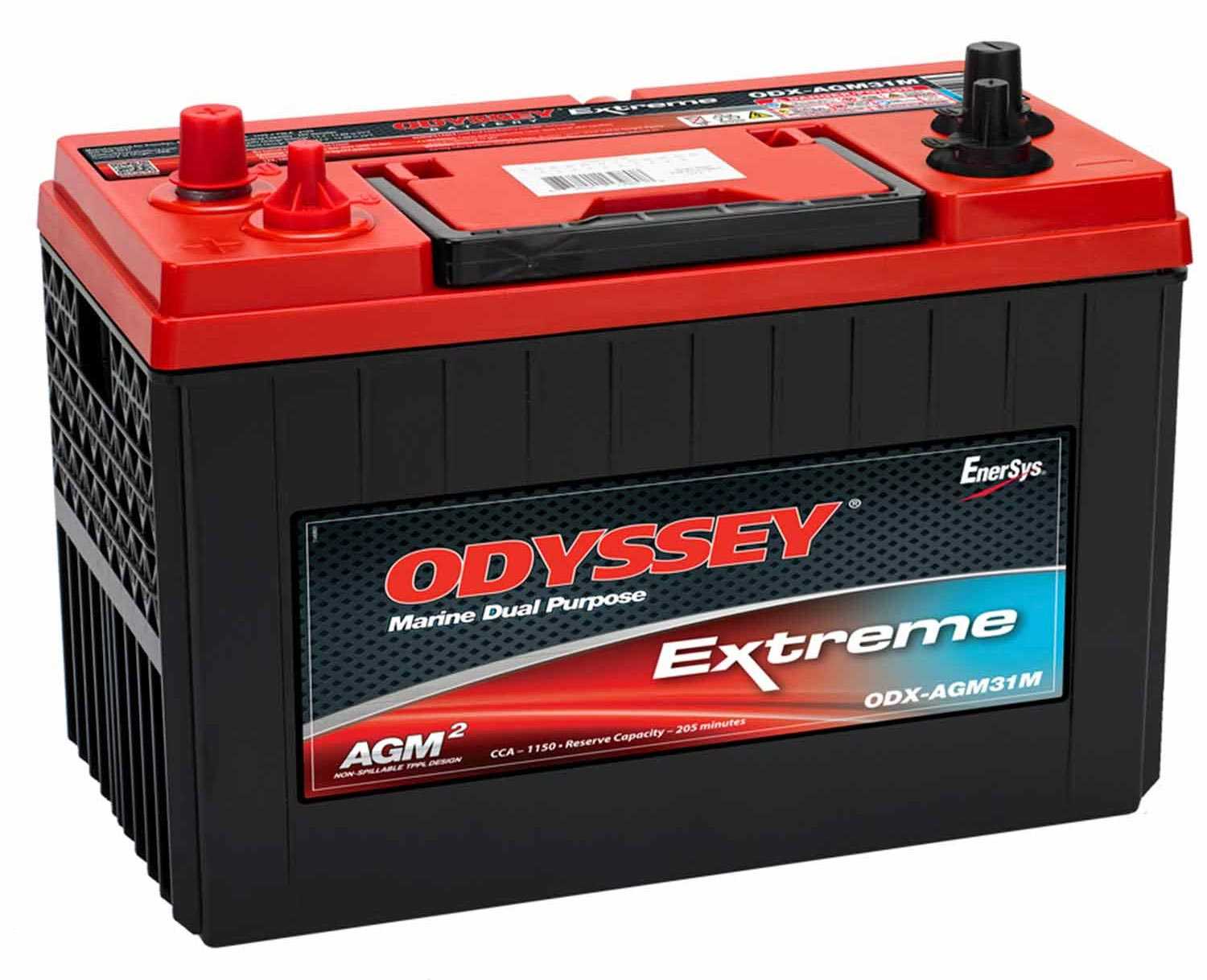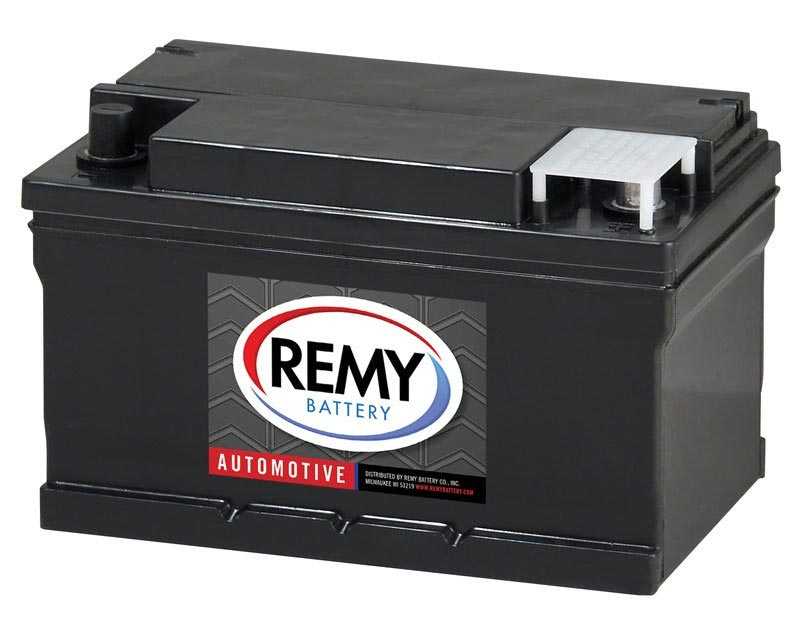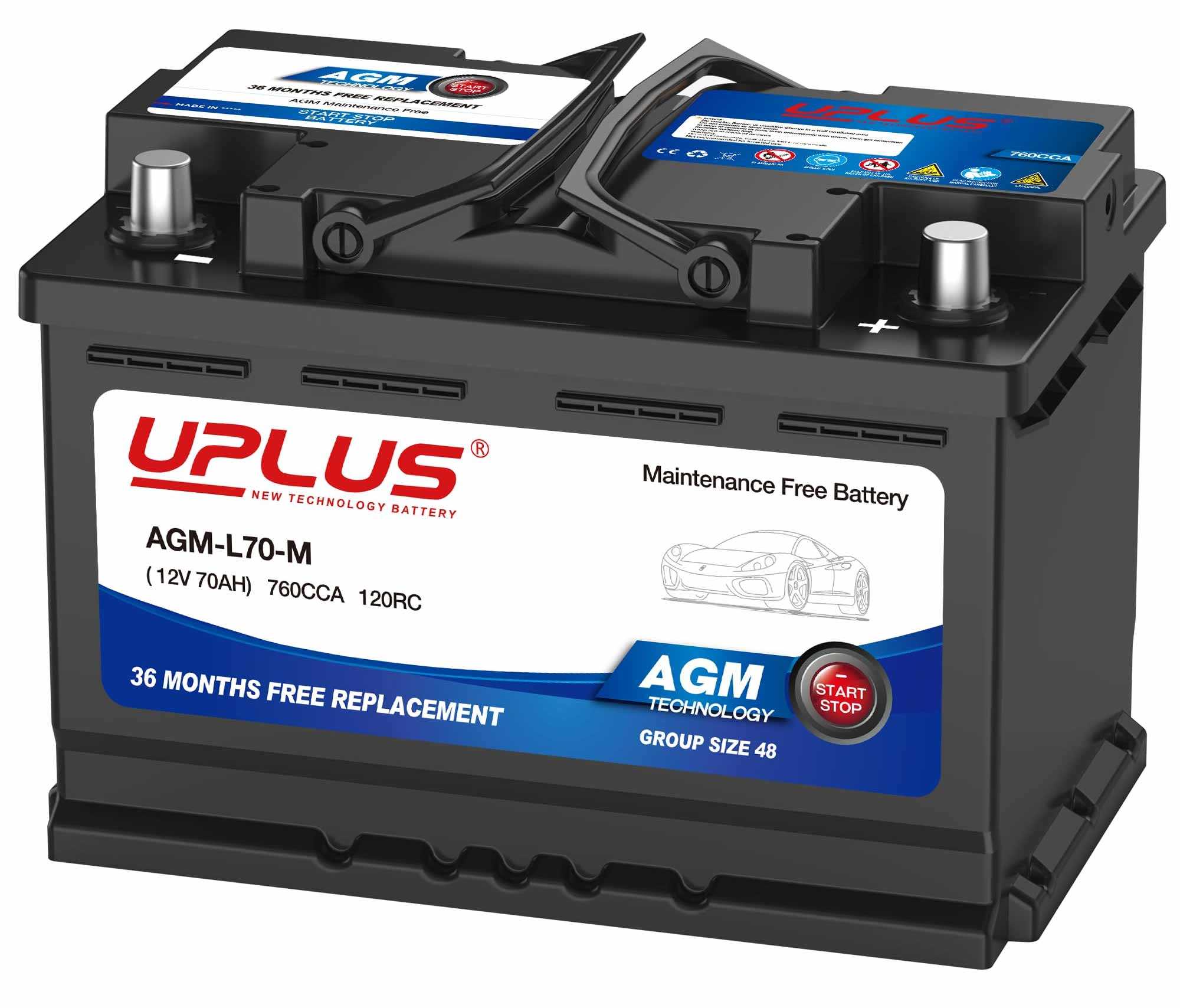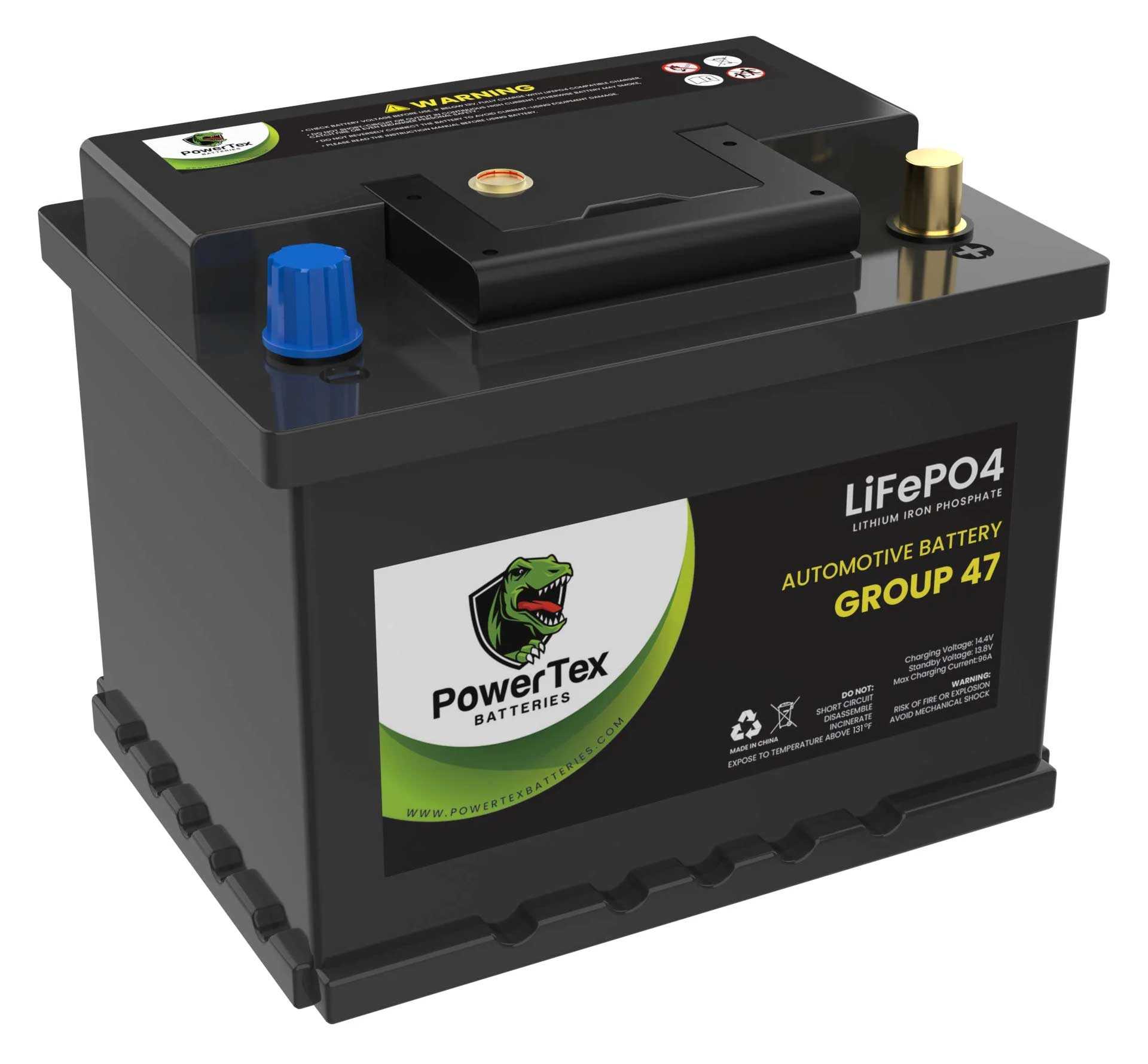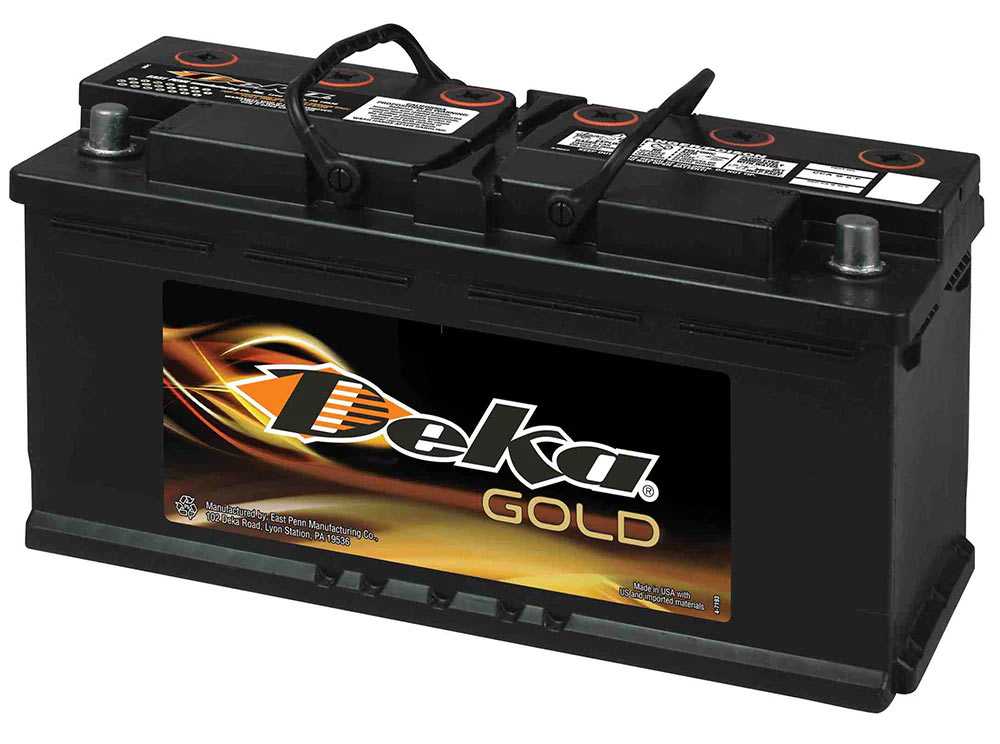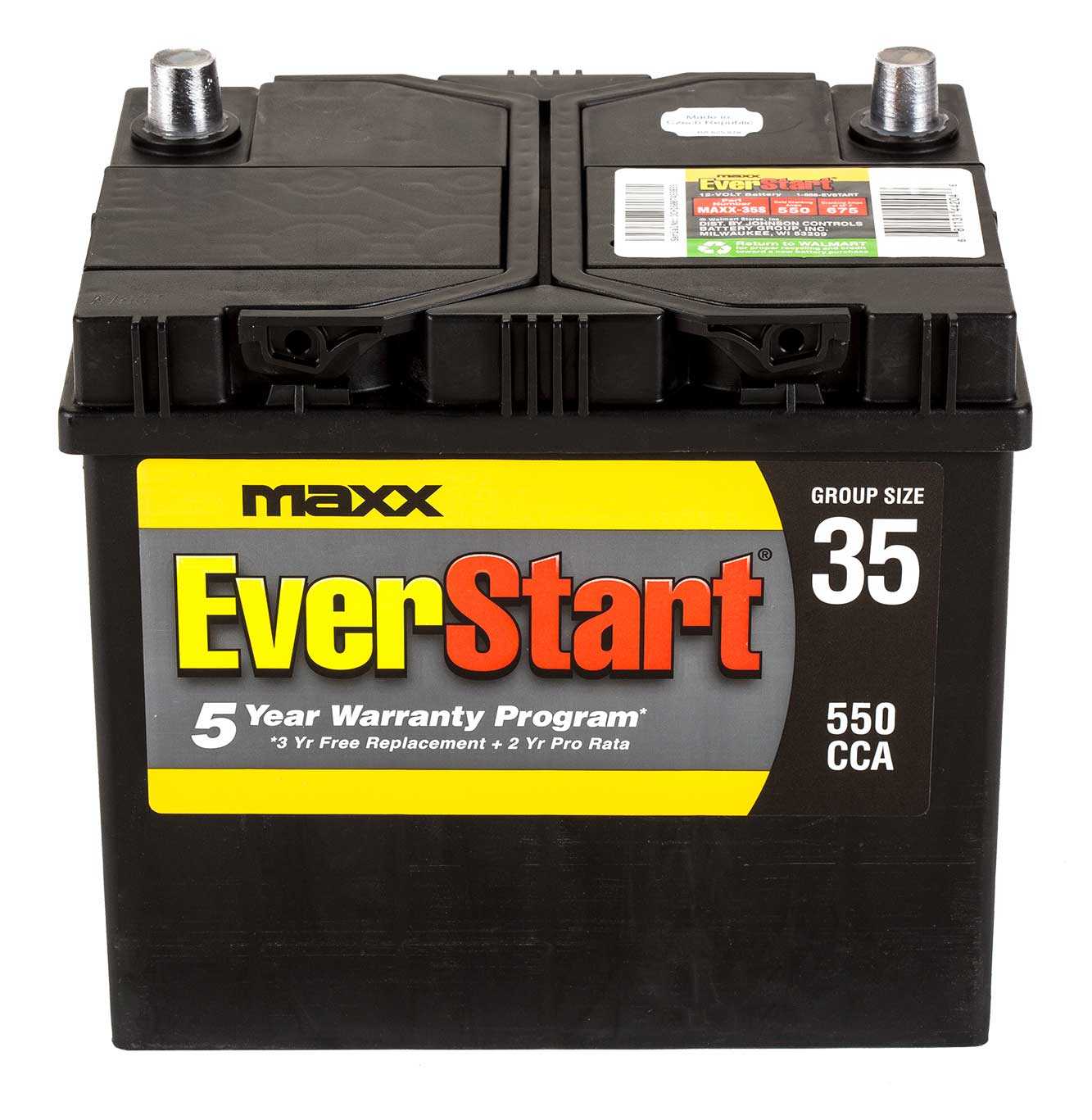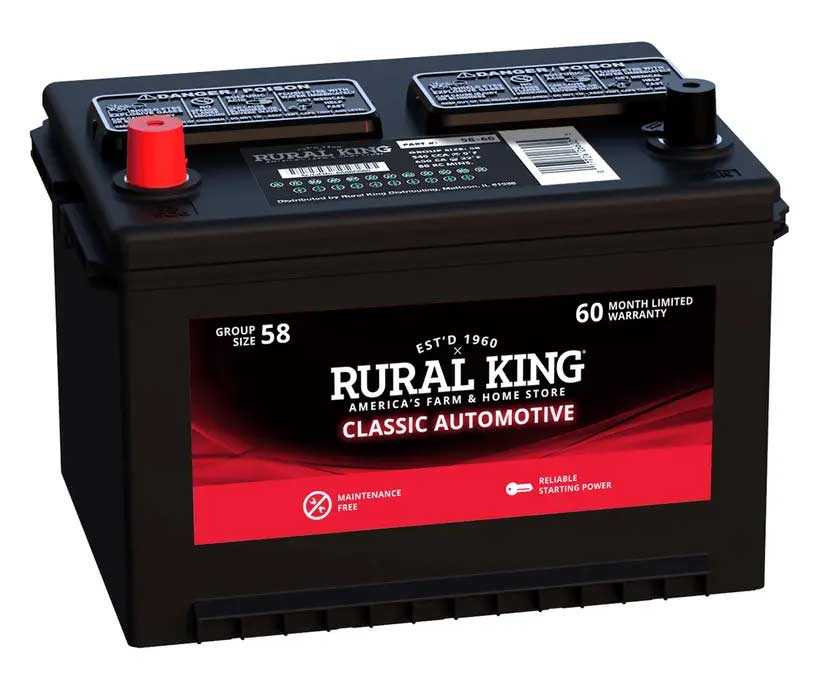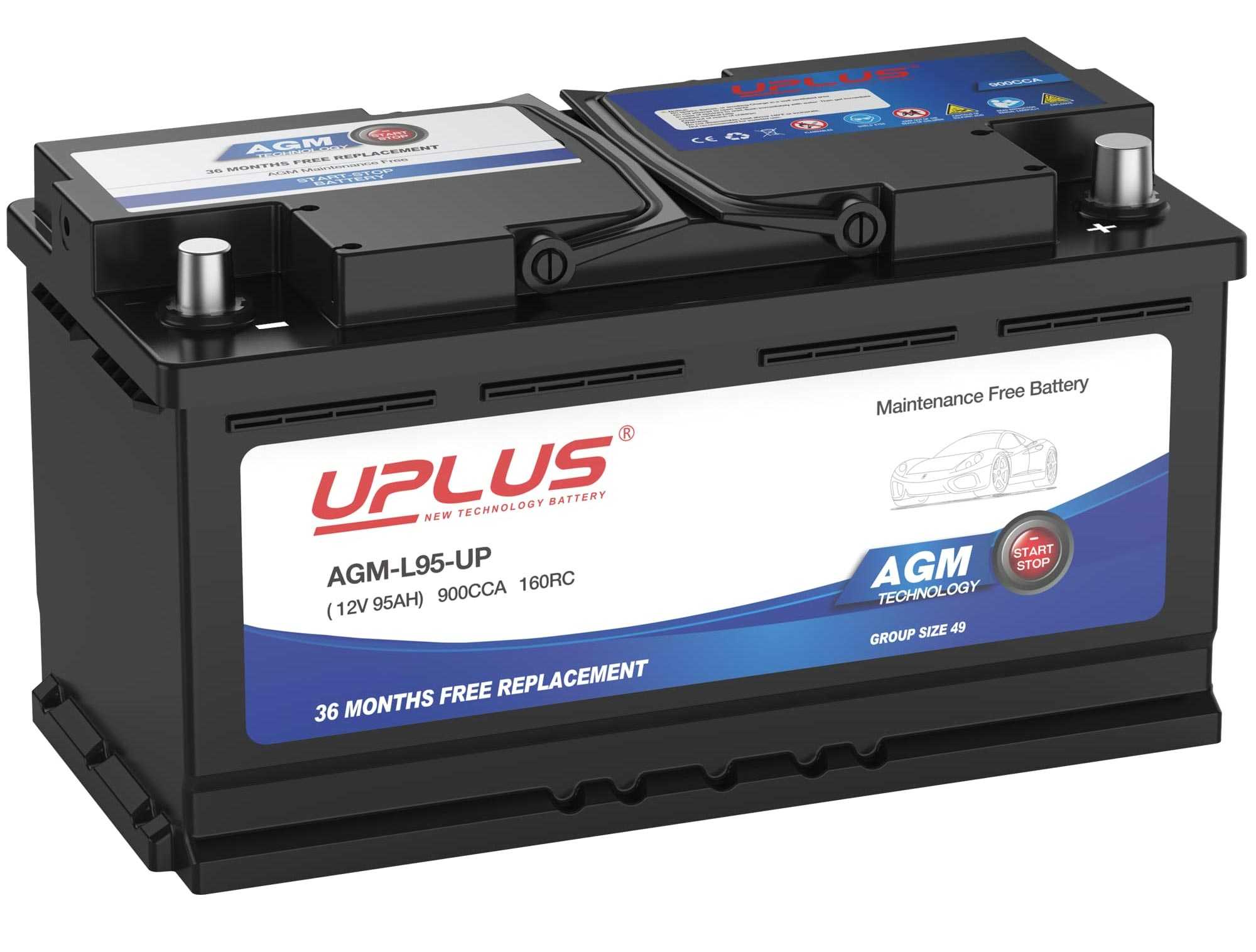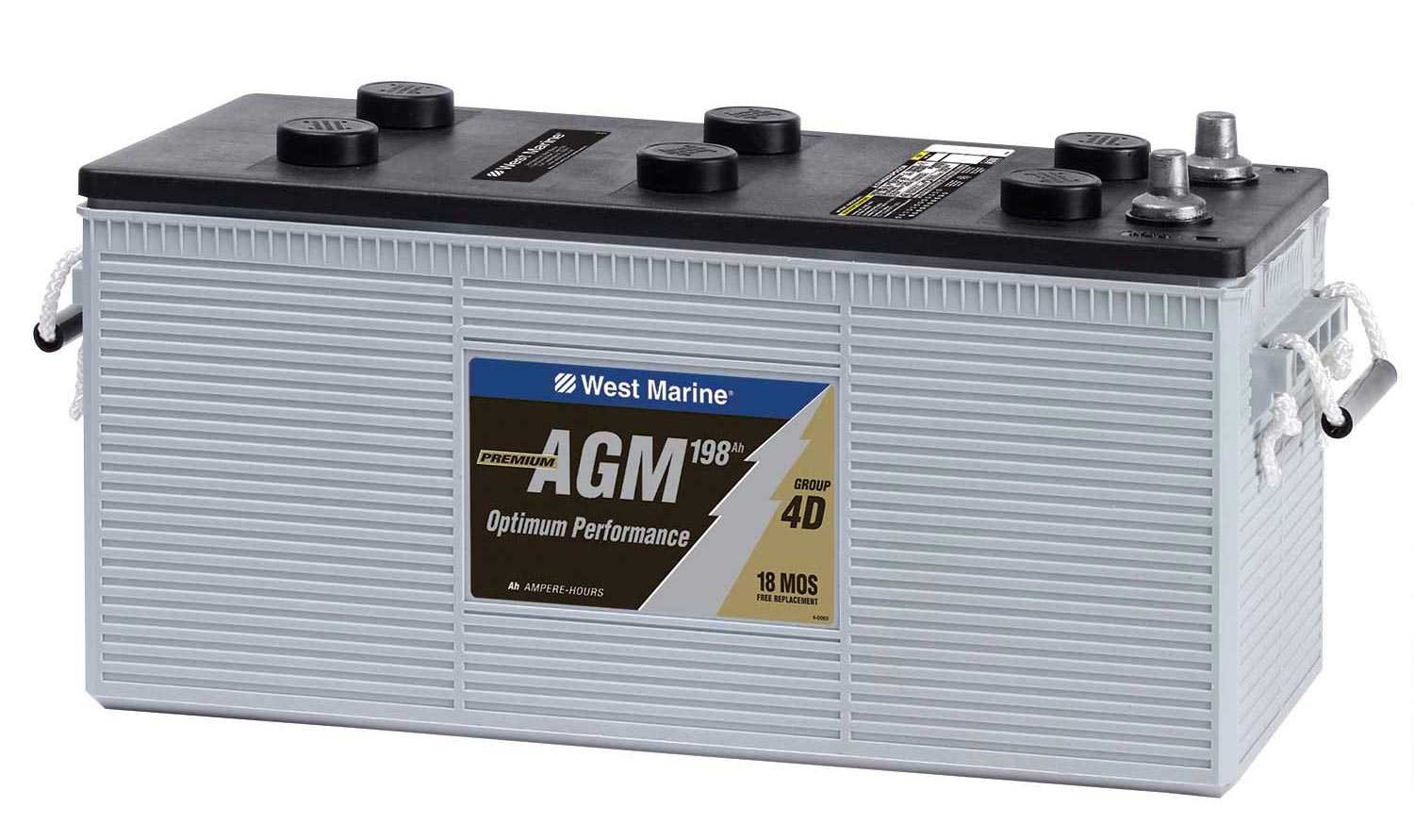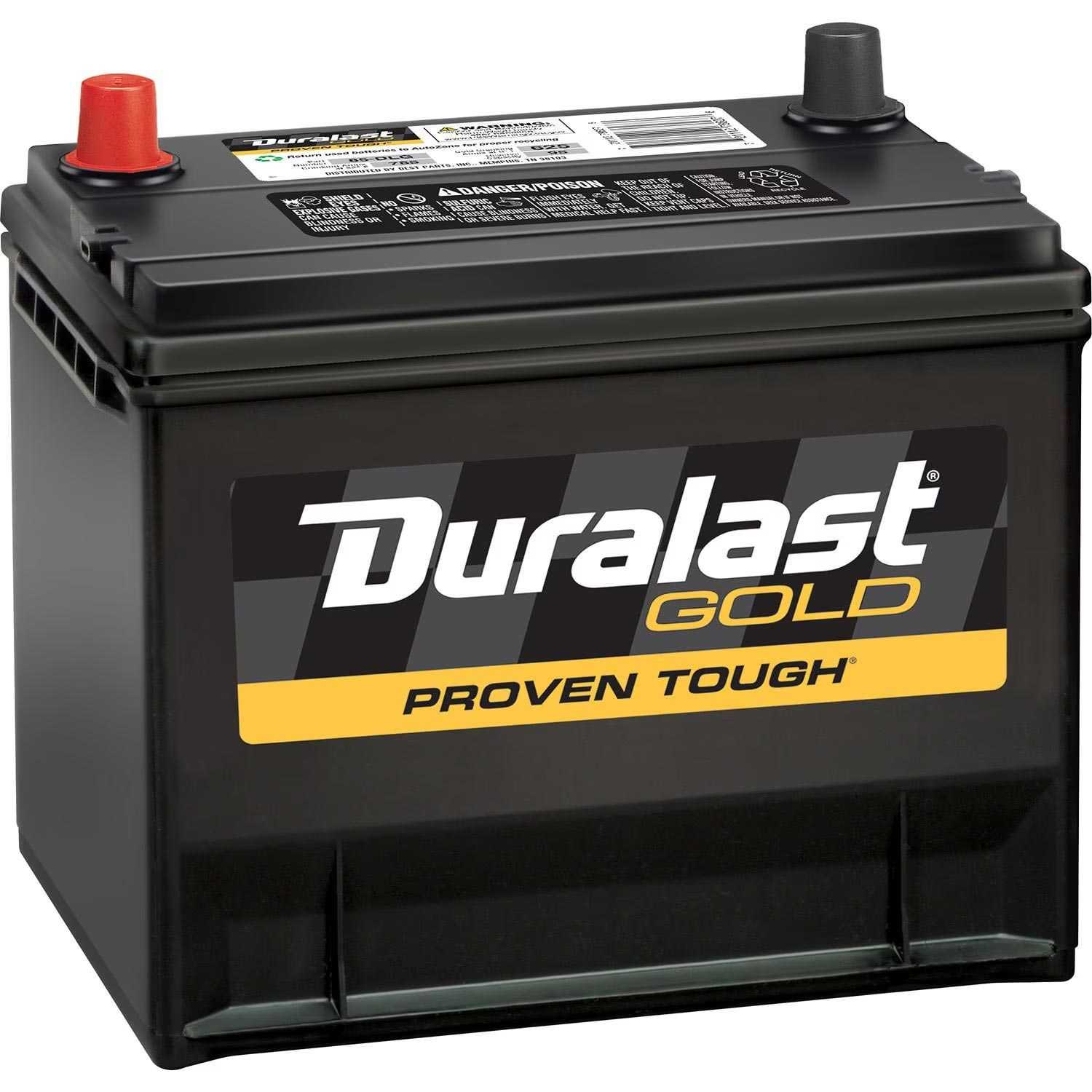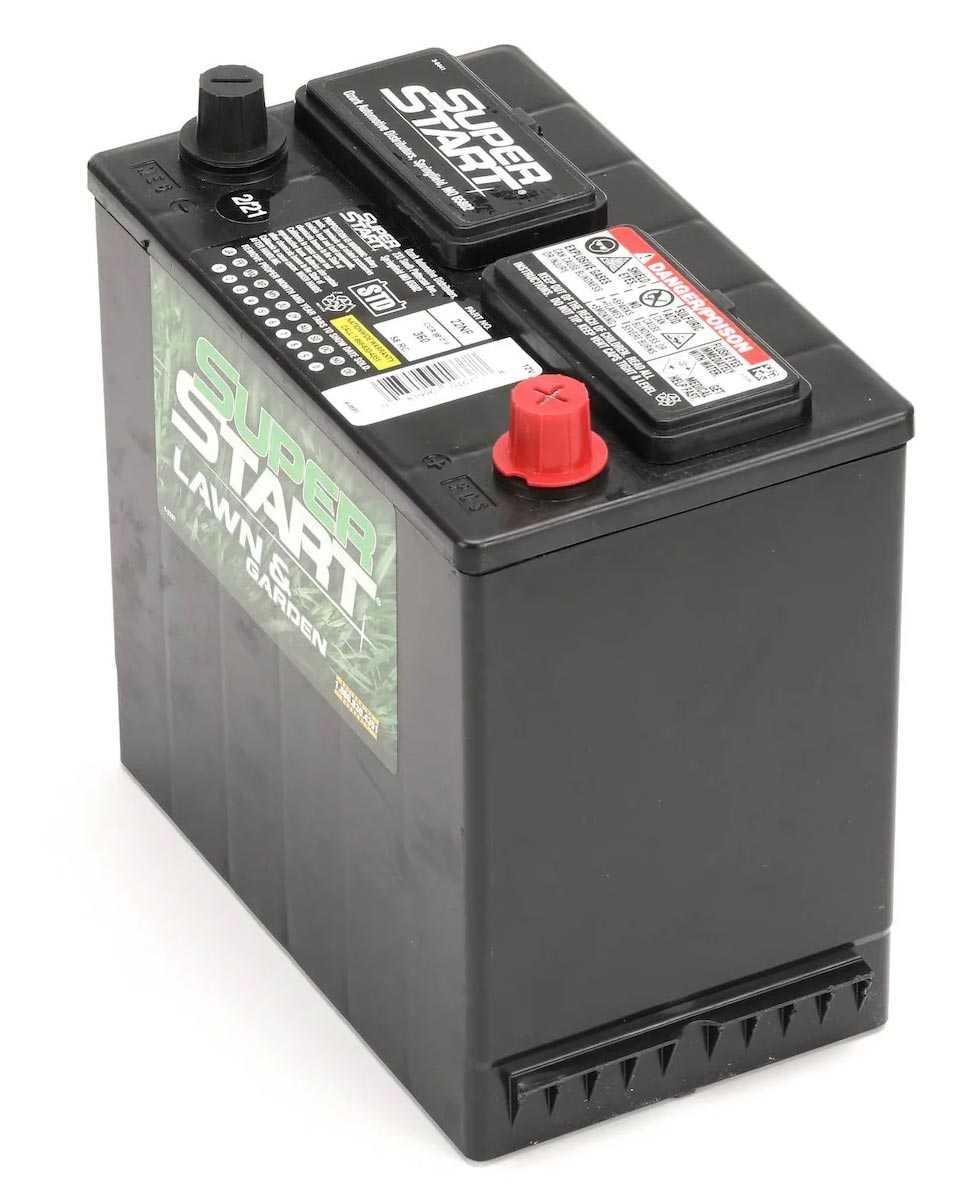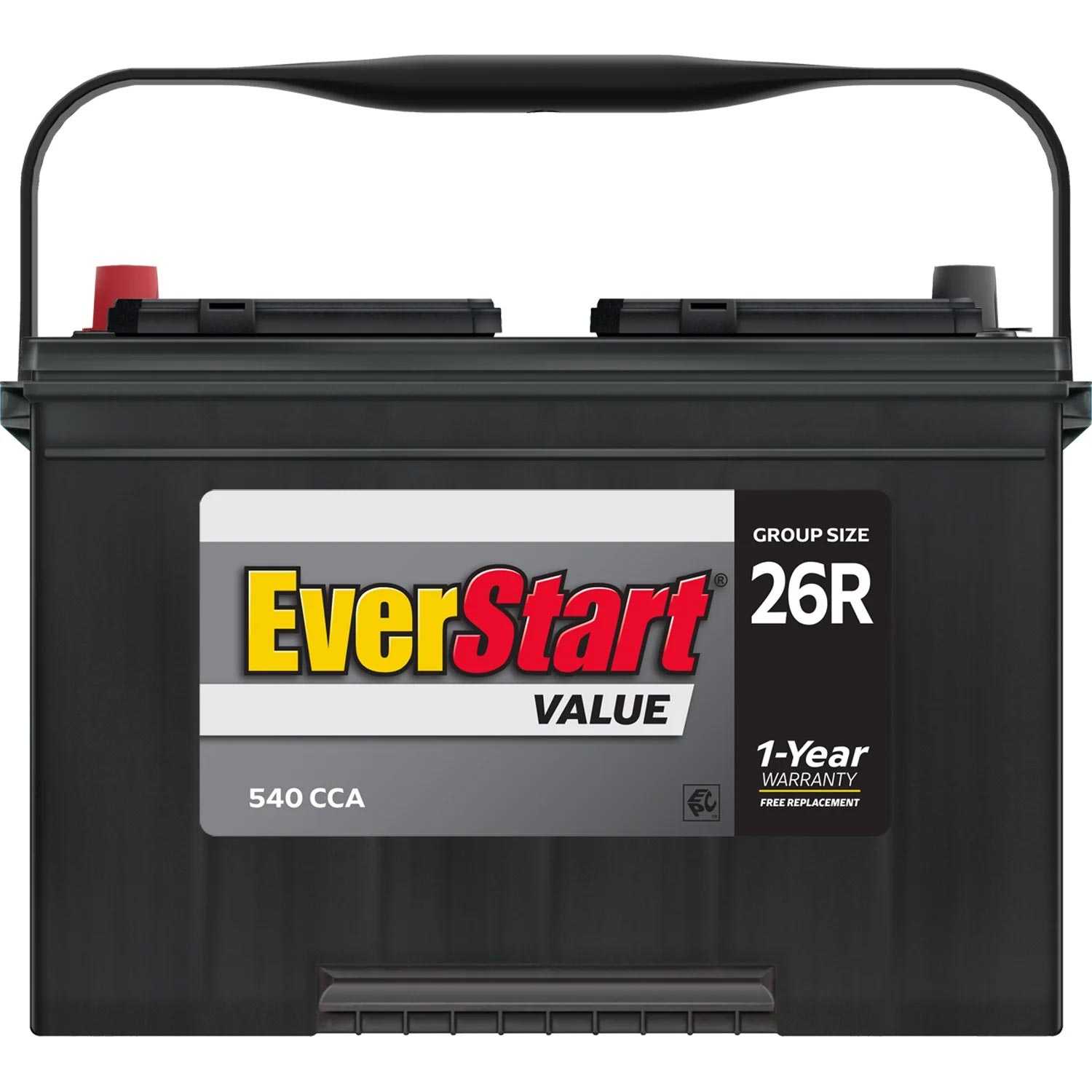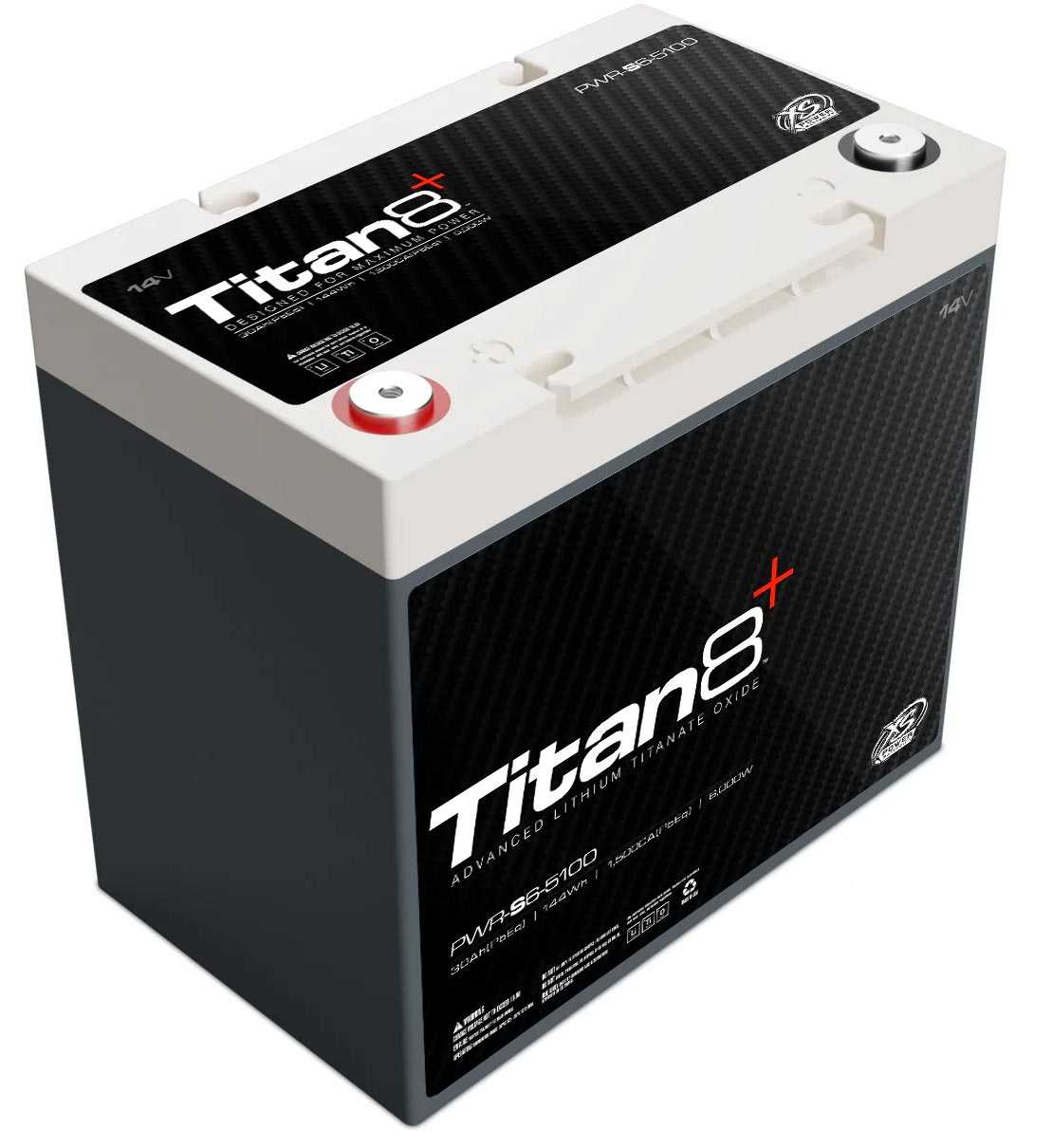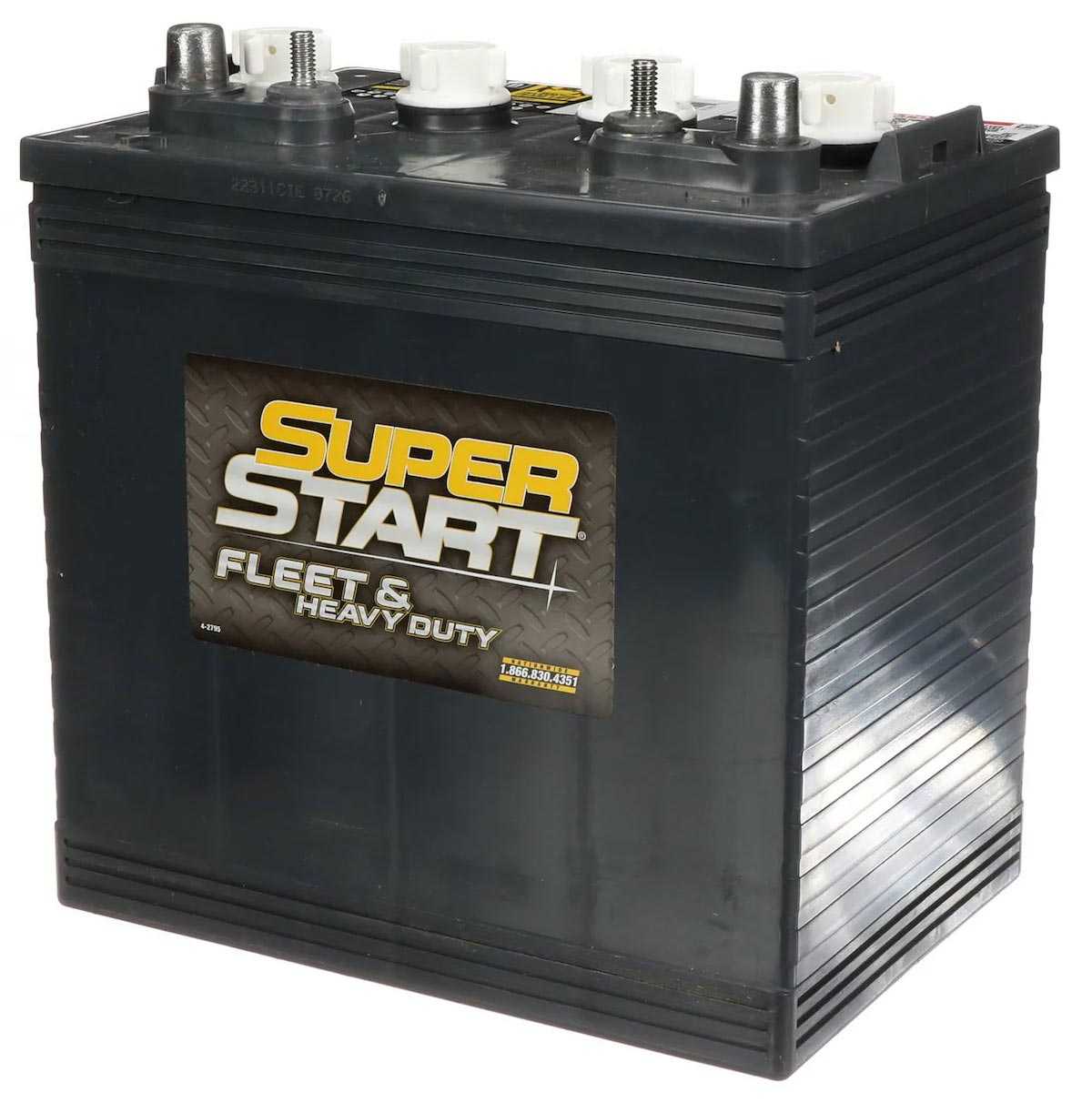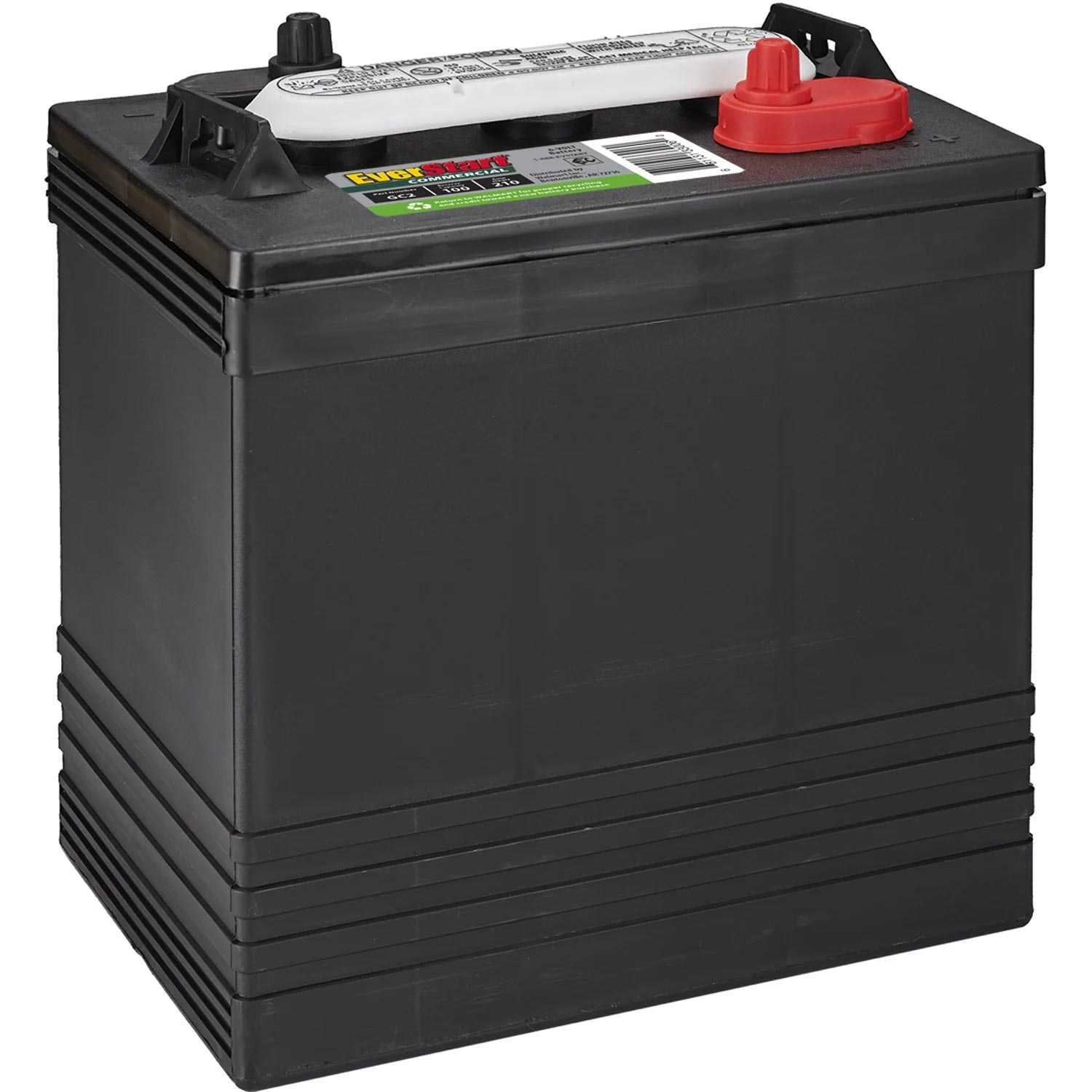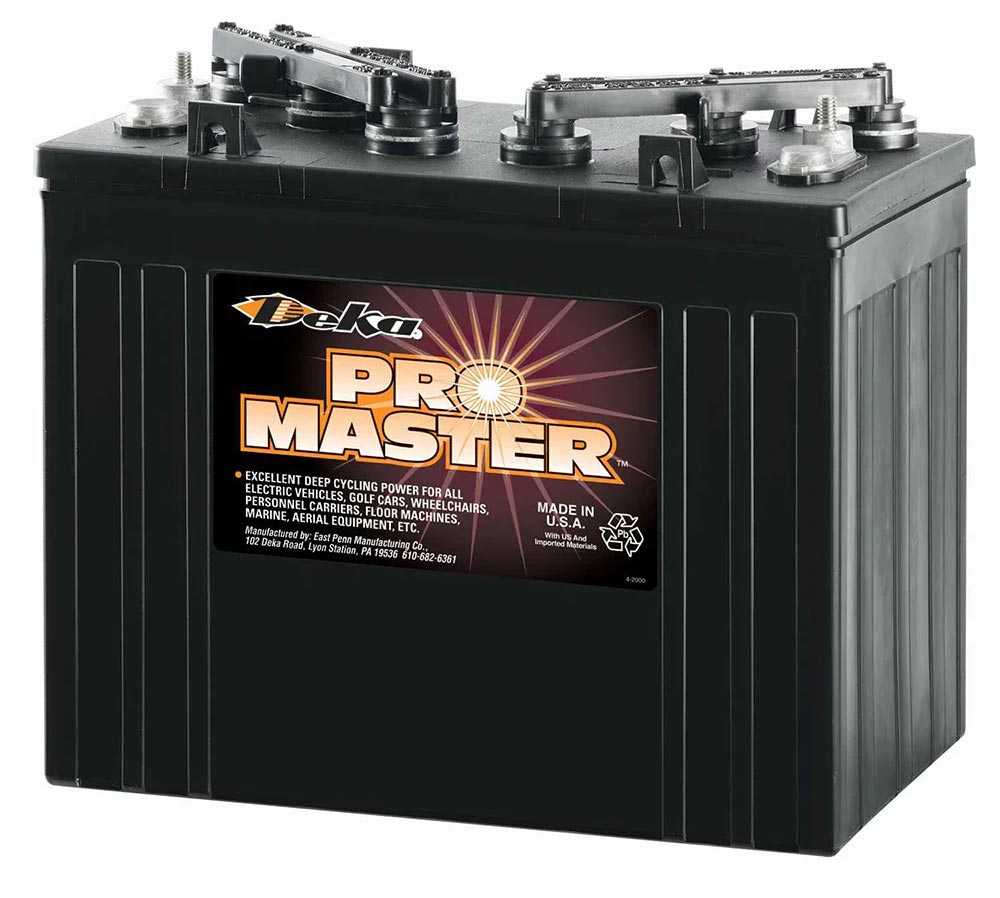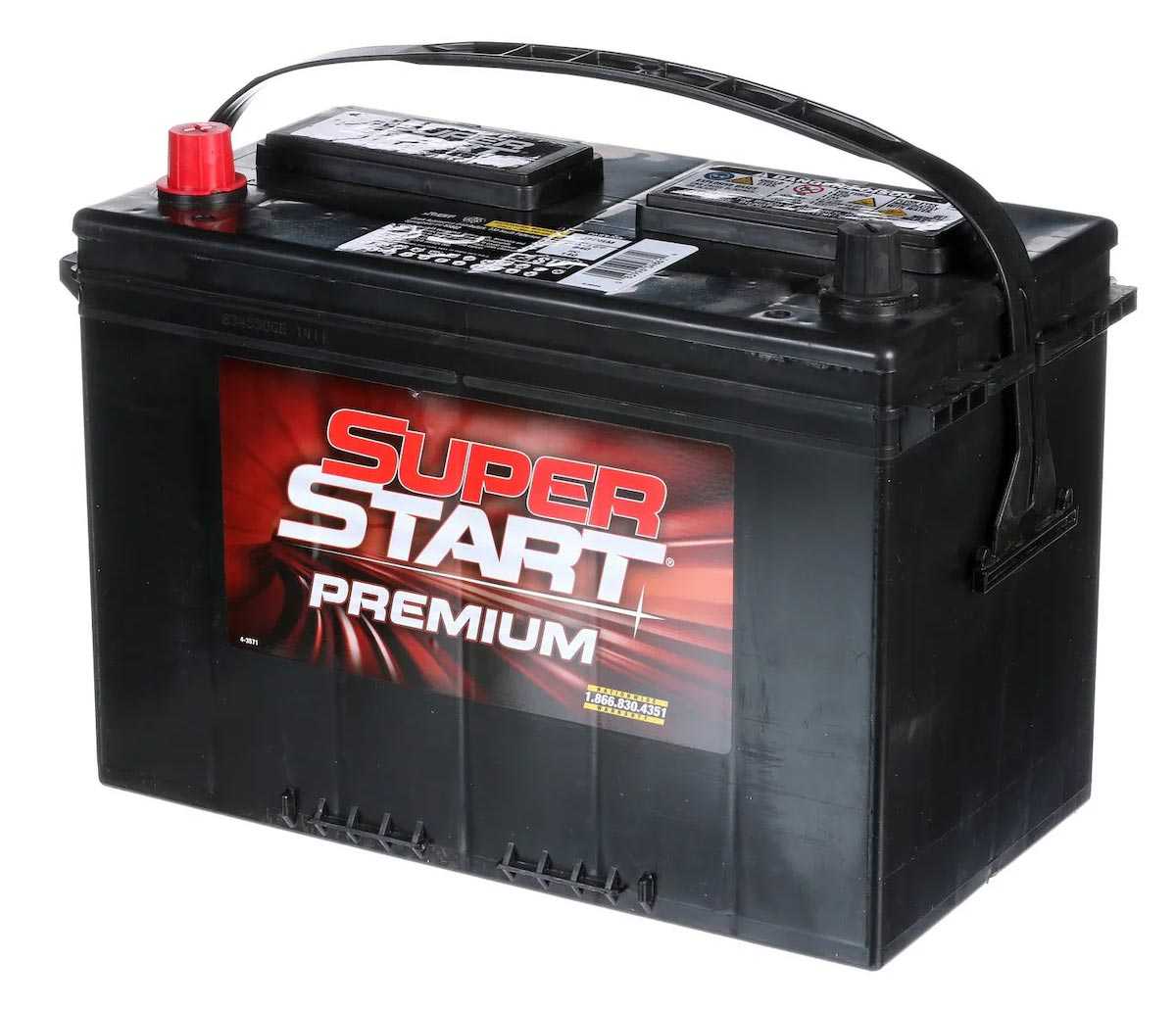There are a number of well-established battery brands that manufacture good and reliable Powersports, ATV, and motorcycle batteries, such as Chrome, Deka, Duralast, EverLast, EverStart, Exide, Extreme Battery, Kinetik, Mighty Max, MotoBatt, PowerStar, Power-Sonic, Odyssey, SigmasTek, Weize, Yuasa, etc.
Batteries for Powersports, ATVs, and Motorcycles
Generally, powersports, ATV, and motorcycle batteries are designed as starting/cranking batteries and are not intended for cyclic applications. These batteries are usually lead-acid batteries, although some manufacturers also offer powerful but lightweight lithium batteries. There are several types of lead-acid batteries: wet/flooded (personally not recommended), absorbent glass mat (AGM), or gel-cells.
#post_seo_title
Wet/flooded batteries are delivered with “dry” cells, which require users to fill them with sulphuric acid.
No matter what type of vehicle you have, opt for an AGM/Gel lead-acid battery and enjoy the ride – just stay safe.
Powersports, ATV, and motorcycle batteries require special battery chargers when charged outside of the vehicle, but can also be charged using onboard battery chargers (a classic alternator or stator generator and a newer charging controller).
ATVs, motorcycles, powersports, etc. It is important to choose a battery of the same size or a similar size that fits your battery compartment, with the same battery terminal and orientation, and with the same or better discharge characteristics, since batteries differ in size and discharge characteristics.
There are many battery brands that offer excellent lead-acid and lithium batteries for practically any Powersports vehicle…
Comparison chart of the most popular motorcycle and powersports batteries
Listed below are some of the most popular battery brands that manufacture Powersports, ATV, and motorcycle batteries.
Battery
Model |
YTX9-BS
10h Cap./CCA
|
YTX12-BS
10h Cap./CCA
|
YTX14AH-BS
10h Cap./CCA
|
YTX14-BS
10h Cap./CCA
|
YTX20L-BS
10h Cap./CCA
|
Dimensions
L x W x H
(inch/mm) |
5.875 x 3.4375 x 4.125
150 x 87 x 105 |
5.875 x 3.5 x 5.125
150 x 88 x 130 |
5.25 x 3.5 x 6.5625
134 x 89 x 166 |
5.875 x 3.4375 x 5.75
150 x 87 x 146 |
6.875 x 3.4375 x 6.125
175 x 87 x 155 |
| Chrome |
YTX9-BS
6/180 |
YTX12-BS
10/180 |
YTX14AH-BS
12/210 |
YTX14-BS
12/200 |
YTX20L-BS
18/270 |
| Deka |
ETX-9
8/120 |
ETX-12
10/180 |
– |
ETX-14 |
ETX20L
18/310 |
| EverLast |
CTX9-BS
8/135 |
CTX12-BS
10/??? |
CTX14AHL-BS
12/190 |
CTX14-BS
12/190 |
CTX20L-BS
14/220 |
| ExpertPower |
YTX9-BS
9/180 |
YTX12-BS
12/210 |
– |
YTX14-BS
14/220 |
YTX20L-BS
20/330 |
| Mighty Max |
YTX9-BS
8/135 |
YTX12-BS
10/180 |
YTX14AH-BS
12/210 |
YTX14-BS
12/200 |
YTX20L-BS
18/270 |
| MotoBatt |
MBTX9U |
MBTX12U |
– |
MBYZ16H |
MBTX20U |
| PowerStar |
YTX9-BS
8/??? |
YTX-12BS
10/180 |
YTX14AH-BS
12/??? |
YTX14-BS
12/205 |
YTX20L-BS
18/220 |
| Power-Sonic |
PTX9-BS
8/120 |
PTX12-BS
10/180 |
PTX14AH-BS
12/200 |
PTX14-BS
12/200 |
PTX20L-BS
18/250 |
| SigmasTek |
STX9-BS
8/120 |
STX12-BS
10/180 |
STX14AH-BS
14/??? |
STX14-BS
12/200 |
STX20L-BS
19/270 |
| VMAX |
XCA120R9
9 (20h)/120 |
XCA160R12
12 (20h)/160 |
– |
XCA200R14
14 (20h)/200 |
– |
| Weize |
YTX9-BS
8/135 |
YTX12-BS
10/210 |
YTX14AH-BS
12/235 |
YTX14-BS
12/235 |
YTX20L-BS
18/200 |
| Yuasa |
YTX9-BS
8/135 |
YTX12-BS
10/180 |
YTX14AH-BS
12/210 |
YTX14-BS
12/200 |
YTX20L-BS
18/270 |
Odyssey is not among these brands – their Extreme Series batteries are listed later, and if they can fit your battery compartment, you should consider them.
Cross-reference chart for powersports, ATV, and motorcycle batteries
The cross-reference chart for Powersports, ATV, and motorcycle batteries contains information on various “standard” size batteries. This includes their dimensions, voltage, and polarity.
We advise against using wet/flooded cell batteries and suggest opting for sealed AGM/Gel-cell batteries instead for simplicity. Please note that the chart does not include details like the position of acid/gases semi-sealed vents found on wet/flooded cells.
Do yourself a favor and choose a sealed battery if possible. Keep in mind that some manufacturers may provide capacity values without specifying the 10 or 20-hour period. However, for starting batteries, the difference in capacity between these time periods is usually minimal (around 5-10%) and not crucial for the end-user.
Additionally, due to varying sizes, some batteries may be larger than indicated on their label. Therefore, we recommend checking both the size of your battery compartment and the actual size of the battery before making a purchase.
Note: It may be easiest to find the exact battery size by pressing “CTRL+F” (browser-dependent) within your browser…
Battery
Model |
Dimensions
L x W x H (inch/mm)
|
Chrome
Ah/CCA |
Weize
Ah/CCA
|
Yuasa
Ah/CCA
|
| 12N24-3 |
7.25 x 4.9375 x 6.875
184 x 125 x 175 |
– |
– |
12N24-3
24/200 |
| 12N24-3A |
7.25 x 4.9375 x 6.875
184 x 125 x 175 |
– |
– |
12N24-3A
24/200 |
| 12N5.5-3B |
5.3125 x 2.375 x 5.125
135 x 60 x 130 |
– |
– |
12N5.5-3B
5.5/55 |
| 12N5.5-4A |
5.3125 x 2.375 x 5.125
135 x 60 x 130 |
– |
– |
12N5.5-4A
5.5/55 |
| 12N5-3B |
4.75 x 2.375 x 5.125
121 x 60 x 130 |
– |
– |
12N5-3B
5/35 |
| 12N5-4B |
4.75 x 2.375 x 5.125
121 x 60 x 130 |
– |
– |
12N5-4B
5/39 |
| 12N7-3B |
5.3125 x 3.0 x 5.1875
135 x 76 x 132 |
– |
– |
12N7-3B
7/70 |
| 12N7-4A |
5.3125 x 3.0 x 5.1875
135 x 76 x 132 |
– |
– |
12N7-4A
7/70 |
| 12N7-4B |
5.3125 x 3.0 x 5.1875
135 x 76 x 132 |
– |
– |
12N7-4B
7/70 |
| 12N9-3A |
5.3125 x 3.0 x 5.5
135 x 76 x 139 |
– |
– |
12N9-3A
9/80 |
| 12N9-4B-1 |
5.3125 x 3.0 x 5.5
135 x 76 x 139 |
YB12N9-4B-1
9/85 |
– |
12N9-4B-1
9/85 |
| 51814 |
7.4375 x 3.25 x 6.75
186 x 82 x 171 |
– |
– |
51814
18 (20h)/100 |
| 51913 |
7.4375 x 3.25 x 6.75
186 x 82 x 171 |
– |
– |
51913
19 (20h)/100 |
| 53030 |
7.4375 x 5.125 x 6.75
186 x 130 x 171 |
– |
– |
53030
30 (20h)/180 |
| 6B8L-B |
4.75 x 2.75 x 3.75
120 x 70 x 95 |
– |
– |
6YB8L-B
8/??? |
| 6N11-2D |
5.875 x 2.6875 x 4.0625
150 x 69 x 103 |
– |
– |
6N11-2D
11/??? |
| 6N11A-1B |
4.75 x 2.375 x 5.1875
121 x 60 x 131 |
– |
– |
6N11A-1B
11/??? |
| 6N2-2A |
2.75 x 1.8125 x 3.75
70 x 46 x 95 |
– |
– |
6N2-2A
2/??? |
| 6N2-2A-4 |
2.75 x 1.8125 x 3.75
70 x 46 x 95 |
– |
– |
6N2-2A-4
2/??? |
| 6N4-2A |
2.75 x 2.75 x 3.75
70 x 70 x 95 |
– |
– |
6N4-2A
4/??? |
| 6N4-2A-2 |
2.75 x 2.75 x 3.75
70 x 70 x 95 |
– |
– |
6N4-2A-2
4/??? |
| 6N4-2A-4 |
2.75 x 2.75 x 3.75
70 x 70 x 95 |
– |
– |
6N4-2A-4
4/??? |
| 6N4-2A-5 |
2.75 x 2.75 x 3.75
70 x 70 x 95 |
– |
– |
6N4-2A-5
4/??? |
| 6N4B-2A |
4.0 x 1.875 x 3.75
102 x 70 x 95 |
– |
– |
6N4B-2A
4/??? |
| 6N4B-2A-3 |
4.0 x 1.875 x 3.75
102 x 70 x 95 |
– |
– |
6N4B-2A-3
4/??? |
| 6N6-1D-2 |
3.875 x 2.25 x 4.25
99 x 57 x 108 |
– |
– |
6N6-1D-2
6/??? |
| 6N6-3B-1 |
3.875 x 2.25 x 4.375
99 x 57 x 111 |
– |
– |
6N6-3B-1
6/??? |
| B10A-A2 |
5.3125 x 3.5625 x 6.125
135 x 90 x 155 |
YB10A-A2 |
– |
YB10A-A2
11/120 |
| B10L-A2 |
5.3125 x 3.5625 x 5.6875
135 x 90 x 145 |
YB10L-A2 |
– |
YB10L-A2
11/120 |
| B10L-B |
5.3125 x 3.5625 x 5.6875
135 x 90 x 145 |
– |
– |
YB10L-B
11/120 |
| B10L-B2 |
5.3125 x 3.5625 x 5.6875
135 x 90 x 145 |
– |
– |
YB10L-B2
11/120 |
| B12A-A |
5.25 x 3.125 x 6.25
134 x 80 x 159 |
YB12A-A
12/165 |
– |
YB12A-A
12/150 |
| B12A-B |
5.25 x 3.125 x 6.25
134 x 80 x 159 |
YB12A-B |
– |
YB12A-B
12/150 |
| B12AL-A |
5.25 x 3.125 x 6.25
134 x 80 x 159 |
– |
– |
YB12AL-A
12/150 |
| B12AL-A2 |
5.25 x 3.125 x 6.25
134 x 80 x 159 |
– |
– |
YB12AL-A2
12/150 |
| B12B-B2 |
6.3125 x 3.5625 x 5.1875
160 x 90 x 131 |
– |
– |
YB12B-B2
11/140 |
| B12C-A |
5.25 x 3.125 x 6.875
134 x 80 x 174 |
– |
– |
YB12C-A
12/150 |
| B14-A2 |
5.3125 x 3.5625 x 6.5625
135 x 90 x 167 |
YB14A-A2
12/210 |
– |
YB14-A2
14/175 |
| B14A-A1 |
5.3125 x 3.5625 x 6.75
135 x 90 x 172 |
– |
– |
YB14A-A1
14/175 |
| B14A-A2 |
5.3125 x 3.5625 x 6.75
135 x 90 x 172 |
YB14A-A2
12/210 |
– |
YB14A-A2
14/175 |
| B14-B2 |
5.3125 x 3.5625 x 6.5625
135 x 90 x 167 |
– |
– |
YB14-B2
14/175 |
| B14L-A1 |
5.25 x 3.5625 x 6.5625
133 x 90 x 167 |
– |
– |
YB14L-A1
14/175 |
| B14L-A2 |
5.3125 x 3.5625 x 6.5625
135 x 90 x 167 |
YB14L-A2
14/190 |
– |
YB14L-A2
14/175 |
| B14L-B2 |
5.3125 x 3.5625 x 6.5625
135 x 90 x 167 |
– |
– |
YB14L-B2
14/175 |
| B16A-AB |
5.875 x 3.5625 x 7.0625
150 x 90 x 181 |
– |
– |
HYB16A-AB
16/190 |
| B16AL-A2 |
8.0625 x 2.75 x 6.5625
205 x 70 x 166 |
– |
– |
YB16AL-A2
16/210 |
| B16-B |
6.875 x 3.875 x 6.125
175 x 99 x 156 |
YB16-B
19/250 |
– |
YB16-B
19/215 |
| B16B-A |
6.3125 x 3.5 x 6.375
160 x 89 x 162 |
– |
– |
YB16B-A
16/207 |
| B16B-A1 |
6.3125 x 3.5 x 6.375
160 x 89 x 162 |
– |
– |
YB16B-A1
16/207 |
| B16C-B |
6.875 x 3.875 x 6.875
175 x 99 x 175 |
– |
– |
YB16C-B
19/240 |
| B16CL-B |
6.875 x 3.875 x 6.875
175 x 99 x 175 |
YB16CL-B
19/240 |
– |
YB16CL-B
19/240 |
| B16HL-A-LM |
8.0625 x 3.5625 x 6.375
205 x 90 x 162 |
– |
– |
– |
| B16L-B |
6.875 x 3.875 x 6.125
175 x 99 x 156 |
– |
– |
YB16L-B
19/215 |
| B18-A |
7.125 x 3.5625 x 6.3125
181 x 90 x 160 |
– |
– |
YB18-A
18/215 |
| B18L-A |
7.125 x 3.5625 x 6.3125
181 x 90 x 160 |
– |
– |
YB18L-A
18/215 |
| B2.5L-C-1 |
3.125 x 2.75 x 4.125
80 x 70 x 105 |
– |
– |
YB2.5L-C-1
2.5/15 |
| B30CL-B |
6.625 x 5.1875 x 7.5625
168 x 132 x 192 |
– |
– |
YB30CL-B
30/300 |
| B30L-B |
6.625 x 5.1875 x 6.9375
168 x 132 x 176 |
– |
– |
YB30L-B
30/300 |
| B38-6A |
4.6875 x 3.25 x 6.9375
119 x 83 x 161 |
– |
– |
B38-6A
13/??? |
| B39-6 |
4.9375 x 1.875 x 4.9375
126 x 48 x 126 |
– |
– |
B39-6
7/??? |
| B3L-A |
3.9375 x 2.25 x 4.9375
100 x 57 x 110 |
– |
– |
YB3L-A
3/30 |
| B3L-B |
3.9375 x 2.25 x 4.9375
100 x 57 x 110 |
– |
– |
YB3L-B
3/30 |
| B49-6 |
3.5625 x 3.25 x 6.9375
90 x 83 x 161 |
– |
– |
B49-6
8/??? |
| B4L-A |
4.75 x 2.8125 x 3.625
121 x 71 x 92 |
– |
– |
YB4L-A
4/45 |
| B4L-B |
4.75 x 2.8125 x 3.625
121 x 71 x 92 |
– |
– |
YB4L-B
4/45 |
| B50-N18A-A |
8.0625 x 3.5625 x 6.9375
205 x 90 x 176 |
– |
– |
Y50-N18A-A
20/240 |
| B50-N18L-A |
8.0625 x 3.5625 x 6.375
205 x 90 x 162 |
– |
– |
Y50N18L-A
20/240 |
| B50-N18L-A3 |
8.0625 x 3.5625 x 6.375
205 x 90 x 162 |
Y50-N18L-A3
21/260 |
– |
Y50-N18L-A3
20/240 |
| B50N-18L-LM |
8.0625 x 3.5625 x 6.375
205 x 90 x 162 |
– |
– |
– |
| B5L-B |
4.75 x 2.375 x 5.125
121 x 60 x 130 |
YB5L-B
5/65 |
– |
YB5L-B
5/60 |
| B60-N24-A |
7.25 x 4.9375 x 6.6875
184 x 125 x 170 |
– |
– |
Y60-N24-A
28/241 |
| B60-N24AL-B |
7.25 x 4.9375 x 6.6875
184 x 125 x 170 |
– |
– |
– |
| B60-N24L-A |
7.25 x 4.9375 x 6.6875
184 x 125 x 170 |
– |
– |
Y60-N24L-A
28/241 |
| B7-A |
5.3125 x 3.0 x 5.1875
135 x 76 x 132 |
– |
– |
YB7-A
8/105 |
| B7B-B |
5.875 x 2.375 x 5.125
150 x 60 x 130 |
– |
– |
YB7B-B
7/80 |
| B7C-A |
5.25 x 3.625 x 4.5625
133 x 92 x 116 |
– |
– |
YB7C-A
7/75 |
| B7L-B |
5.3125 x 3.0 x 5.1875
135 x 76 x 132 |
– |
– |
YB7L-B
8/75 |
| B9A-A |
5.3125 x 3.0 x 6.125
135 x 76 x 155 |
– |
– |
YB9A-A
9/115 |
| B9-B |
5.3125 x 3.0 x 5.4375
135 x 76 x 138 |
YB9-BS
9/85 |
– |
YB9-B
9/115 |
| B9L-A2 |
5.3125 x 3.0 x 5.4375
135 x 76 x 138 |
– |
– |
YB9L-A2
9/100 |
| B9L-B |
5.3125 x 3.0 x 5.4375
135 x 76 x 138 |
– |
– |
YB9L-B
9/115 |
| BT12A-BS |
5.875 x 3.4375 x 4.125
150 x 87 x 105 |
– |
– |
YT12A-BS
10/175 |
| BT12B-4 |
6.0 x 2.75 x 5.125
150 x 69 x 130 |
– |
– |
– |
| BT14B-4 |
5.875 x 3.4375 x 5.75
150 x 87 x 146 |
– |
– |
– |
| BT19BL-BS |
7.3125 x 3.1875 x 6.6875
185 x 81 x 170 |
– |
– |
YT19BL-BS
17.7/170 |
| BT4B-5 |
4.4375 x 1.5 x 3.375
113 x 38 x 86 |
– |
– |
– |
| BT7B-4 |
6.0 x 2.5625 x 3.6875
150 x 65 x 93 |
– |
– |
– |
| BT7B-BS |
5.875 x 2.5625 x 3.6875
150 x 65 x 93 |
YT7B-BS
6.5/85 |
YT7B-BS
6.5/120 |
YT7B-BS
6.5/110 |
| BT9B-4 |
5.875 x 2.6875 x 4.125
150 x 69 x 105 |
– |
– |
– |
| BTR9-BS |
5.875 x 3.4375 x 4.125
150 x 87 x 105 |
– |
– |
– |
| BTX12-BS |
5.875 x 3.5 x 5.125
150 x 88 x 130 |
YTX12-BS
10/180 |
YTX12-BS
10/210 |
YTX12-BS
10/180 |
| BTX14 |
5.875 x 3.4375 x 5.75
150 x 87 x 146 |
– |
– |
– |
| BTX14AH-BS |
5.25 x 3.5 x 6.5625
134 x 89 x 166 |
YTX14AH-BS
12/210 |
YTX14AH-BS
12/235 |
YTX14AH-BS
12/210 |
| BTX14AHL-BS |
5.25 x 3.5 x 6.5625
134 x 89 x 166 |
YTX14AHL-BS
12/210 |
– |
YTX14AHL-BS
12/210 |
| BTX14-BS |
5.875 x 3.4375 x 5.75
150 x 87 x 146 |
YTX14-BS
12/200 |
YTX14-BS
12/235 |
YTX14-BS
12/200 |
| BTX14L-BS |
6.0 x 3.4375 x 5.75
153 x 87 x 146 |
YTX14L-BS
12/200 |
– |
YTX14L-BS
12/200 |
| BTX15L |
6.875 x 3.4375 x 5.125
175 x 87 x 130 |
– |
– |
YTX15L
13/230 |
| BTX15L-BS |
6.875 x 3.4375 x 5.125
175 x 87 x 130 |
– |
– |
YTX15L-BS
13/230 |
| BTX16-BS |
5.875 x 3.4375 x 6.9375
150 x 88 x 161 |
YTX16-BS
14/230 |
YTX16-BS
14/200 |
YTX16-BS
14/230 |
| BTX16-BS-1 |
5.875 x 3.4375 x 6.9375
150 x 88 x 161 |
YTX16-BS-1
14/200 |
– |
YTX16-BS-1
14/230 |
| BTX20-BS |
6.875 x 3.4375 x 6.125
175 x 87 x 155 |
YTX20-BS
18/270 |
– |
YTX20-BS
18/270 |
| BTX20CH-BS |
6.0 x 3.4375 x 6.375
153 x 87 x 161 |
YTX20CH-BS
18/270 |
– |
YTX20CH-BS
18/270 |
| BTX20H-BS |
6.875 x 3.4375 x 6.125
175 x 87 x 155 |
YTX20H-BS
18/310 |
– |
YTX20H-BS
18/310 |
| BTX20HL-BS |
6.875 x 3.4375 x 6.125
175 x 87 x 155 |
YTX20HL-BS
18/310 |
YTX20HL-BS
18/310 |
YTX20HL-BS
18/310 |
| BTX20L |
6.875 x 3.4375 x 6.125
175 x 87 x 155 |
– |
– |
YTX20L |
| BTX20L-BS |
6.875 x 3.4375 x 6.125
175 x 87 x 155 |
YTX20L-BS
18/270 |
YTX20L-BS
18/200 |
YTX20L-BS
18/270 |
| BTX24HL |
8.0625 x 3.4375 x 6.375
205 x 87 x 162 |
– |
– |
YTX24HL |
| BTX24HL-BS |
8.0625 x 3.4375 x 6.375
205 x 87 x 162 |
YTX24HL-BS
21/300 |
– |
YTX24HL-BS
21/350 |
| BTX30L |
6.5625 x 4.9375 x 6.875
166 x 126 x 175 |
– |
– |
YIX30L |
| BTX30L-BS |
6.5625 x 4.9375 x 6.875
166 x 126 x 175 |
YTX30L-BS
30/360 |
YTX30L-BS
30/385 |
YIX30L-BS
30/385 |
| BTX4L-BS |
4.4375 x 2.75 x 3.375
113 x 70 x 86 |
YTX4L-BS
3/50 |
YTX4L-BS
3/50 |
YTX4L-BS
3/50 |
| BTX5L-BS |
4.4375 x 2.75 x 4.125
113 x 70 x 105 |
YTX5L-BS
4/70 |
YTX5L-BS
4/80 |
YTX5L-BS
4/80 |
| BTX7A-BS |
5.875 x 3.4375 x 3.5625
150 x 87 x 90 |
YTX7A-BS
6/90 |
YTX7A-BS
6/105 |
YTX7A-BS
6/105 |
| BTX7L-BS |
4.4375 x 2.75 x 5.0625
113 x 70 x 129 |
YTX7L-BS
6/85 |
YTX7L-BS
6/??? |
YTX7L-BS
6/100 |
| BTX9-BS |
5.875 x 3.4375 x 4.125
150 x 87 x 105 |
YTX9-BS
8/120 |
YTX9-BS
8/135 |
YTX9-BS
8/135 |
| BTZ10S |
5.875 x 3.4375 x 3.6875
150 x 87 x 93 |
YTZ10S-BS
8.6/190 |
YTZ10S-BS
8.5/190 |
YTZ10S
8.6/190 |
| BTZ12S |
5.875 x 3.4375 x 4.3125
150 x 87 x 110 |
– |
– |
YTZ12S
11/210 |
| BTZ14S |
5.875 x 3.4375 x 4.3125
150 x 87 x 110 |
YTZ14S
11.2/200 |
– |
YTZ14S
11.2/230 |
| BTZ16H |
5.875 x 3.4375 x 5.75
150 x 87 x 146 |
– |
– |
GYZ16H
16/240 |
| BTZ20L |
6.875 x 3.4375 x 6.125
175 x 87 x 155 |
– |
– |
GYZ20L
20/250 |
| BTZ5S |
4.4375 x 2.75 x 3.375
113 x 70 x 85 |
– |
– |
YTZ5S
3.5/65 |
| BTZ7S |
4.4375 x 2.75 x 4.125
113 x 70 x 105 |
YTZ7S
6/??? |
YTZ7S-BS
6/??? |
YTZ7S
6/130 |
| BTZ8V |
4.4375 x 2.75 x 5.125
113 x 70 x 130 |
– |
– |
YTZ8V
7/130 |
| H-12 |
7.875 x 5.0625 x 6.375
200 x 129 x 162 |
– |
– |
– |
| SB12A-A |
5.25 x 3.125 x 6.25
134 x 80 x 159 |
YB12A-A
12/165 |
– |
YB12A-A
12/150 |
| SB14L-B2 |
5.3125 x 3.5625 x 6.5625
135 x 90 x 167 |
YB14L-A2
14/190 |
– |
YB14L-B2
14/175 |
| SB50N-18L-AT |
8.0625 x 3.5625 x 6.375
205 x 90 x 162 |
– |
– |
YIX50L-BS
22/360 |
There are also other quality brands on the market, so if you find a battery that suits your needs at an affordable price and with a good warranty from another brand, don’t hesitate to buy it. Some of the most popular brands include Chrome, Deka, Duralast, EverLast, EverStart, Exide, Extreme Battery, Kinetik, Mighty Max, MotoBatt, PowerStar, Power Sonic, Odyssey, SigmasTek, Weize, Yuasa, among others (alphabetic order).
Chart of Odyssey Extreme Series Batteries
Several Odyssey Extreme Series batteries can be used as excellent powersports, ATV, and motorcycle batteries. Though these batteries are not built to exact standards, they are very durable batteries if they fit your battery compartment and battery cables.
| Model |
Voltage
|
PHCA
(5 sec.) |
CCA* |
Nominal Capacity
Ah (10h) |
Dimensions
L x W x H (inch/mm) |
Weight
lbs/kg |
Amazon Link |
| PC310 |
12 |
310 |
100 |
7 |
5.43 x 3.90 x 3.98
138.0 x 99.0 x 101.0 |
5.9/2.7 |
Odyssey PC310 Battery |
| PC370 |
12 |
425 |
200 |
14 |
7.9 x 3.0 x 5.5
200.0 x 77.0 x 140.0 |
12.5/5.7 |
Odyssey PC370 Battery |
| PC535 |
12 |
535 |
200 |
13 |
6.70 x 3.90 x 6.24
170.2 x 99.1 x 158.5 |
12.0/5.4 |
Odyssey PC535 Battery |
| PC545 |
12 |
460 |
150 |
12 |
7.01 x 3.38 x 5.16
178.1 x 85.9 x 131.1 |
11.4/5.2 |
Odyssey PC545 Battery |
| PC625 |
12 |
540 |
220 |
17 |
6.70 x 3.90 x 6.95
170.2 x 99.1 x 176.5 |
13.2/6.0 |
Odyssey PC625 Battery |
| PC680 |
12 |
520 |
170 |
16 |
7.27 x 3.11 x 7.55
184.7 x 79.0 x 191.8 |
15.4/7.0 |
Odyssey PC680 Battery |
| PC925 |
12 |
900 |
330 |
27 |
6.64 x 7.05 x 5.83
168.7 x 179.1 x 148.1 |
23.8/10.8 |
Odyssey PC925 Battery |
| PC950 |
12 |
950 |
400 |
32 |
9.8 x 3.8 x 6.1
250.0 x 97.0 x 156.0 |
20.0/9.0 |
Odyssey PC950 Battery |
| PC1200 |
12 |
1200 |
540 |
40 |
7.87 x 6.66 x 7.60
199.9 x 169.2 x 193.0 |
38.2/17.4 |
Odyssey PC1200 Battery |
Odyssey batteries are premium automotive, marine, and industrial batteries. As such, their performances are excellent, and so are their prices.
Why do lead-acid batteries in powersports, ATVs, and motorcycles die?
#post_seo_title
Many people wonder what is actually killing their Powersports batteries and how they can prevent it.
Powersports batteries die mainly because of excessive vibrations and mechanical impacts during use. Thus, any Powersports battery must be mechanically robust and vibration resilient.
Another reason why wet/flooded cell batteries die is the lack of acid – from time to time, it is required that the users check the level of acid in the cells and add distilled water according to the instructions.
Also, older motorcycles, ATVs, snowmobiles, and similar vehicles feature alternators without charging electronics – commonly, they have only four rectifying diodes connected in a so-called Graetz-bridge (diode-bridge), with few capacitors to prevent radio interferences. Such units actually depend on lead-acid batteries to smooth out voltage spikes.
And if those voltage spikes are too high and too frequent, they can ruin the battery rather quickly.
High temperatures can also shorten the lifespan of the lead-acid battery – if possible, during the summer heat, when your vehicle is not in use, keep it in the shade or preferably in an air-conditioned area.
Parasite drains of the onboard electronics (radio, GPS, alarm, etc.) can quickly discharge Powersports batteries since they feature capacity commonly in the 8-20Ah range.
Obviously, there are many other reasons why would onboard battery dies, but these are the most common ones.
Frequently Asked Questions (FAQ)
Here are some of the most popular Frequently Asked Questions (FAQ) about the motorcycle, ATV, and Powersports batteries and the starting/cranking batteries in general.
How do I know what size my motorcycle battery is?
Check the labels on the battery since the battery size is written on every battery.
If such information can’t be found, measure the battery accurately, verify battery terminal orientation, write down capacity (Ah) and Cold Cranking Amps (CCA), and then check the motorcycle batteries list on this page and look for the best possible match.
Are there different sizes of motorcycle batteries?
Yes, there are numerous sizes of motorcycle batteries, differing in Length (L), Width (W), and Height (H). Also, batteries differ in capacity (Ah), Cold Cranking Amps (CCA), weight (pounds/kilograms), battery terminals type and orientation, hold down type (if any), chemistry, etc.
What do motorcycle battery numbers mean?
Numbers like YTX4L-BS, YTZ5S, and similar describe the battery size and type, Capacity is given by the letters “Ah,” “V” is for volts, “CCA” is Cold Cranking Amps, “CA” are Cranking Amps, “MCA” is Marine Cranking Amps, etc.
Does it matter what battery I put in my motorcycle? Are all motorcycle batteries the same?
Of course, it does – batteries come in various sizes, capacities, cranking abilities, sizes, and similar.
Can you use any 12V battery on a motorcycle?
No, a motorcycle battery is a 12V cranking/starting battery that must fit the battery compartment and must be compatible with the motorcycle’s electrical system.
How to charge a motorcycle battery?
While the motorcycle battery is in use, it is kept charged by the motorcycle’s charging system.
However, when the motorcycle is not in use or the battery is removed from the bike, the battery should be charged using a battery charger compatible with the battery chemistry and featuring a charging current of 0.1-0.15C for lead-acid batteries and 0.2-0.3C for lithium batteries.
Also, it is recommended to use an intelligent battery charger that automatically switches from battery charging to battery maintaining mode.
How much does a motorcycle battery cost?
Motorcycle batteries are relatively small batteries, making lead-acid models rather cheap.
Lithium motorcycle batteries cost much more (usually 4-8x more than the comparable lead-acid battery), but they also lead to some weight savings and better cranking at moderate temperatures.
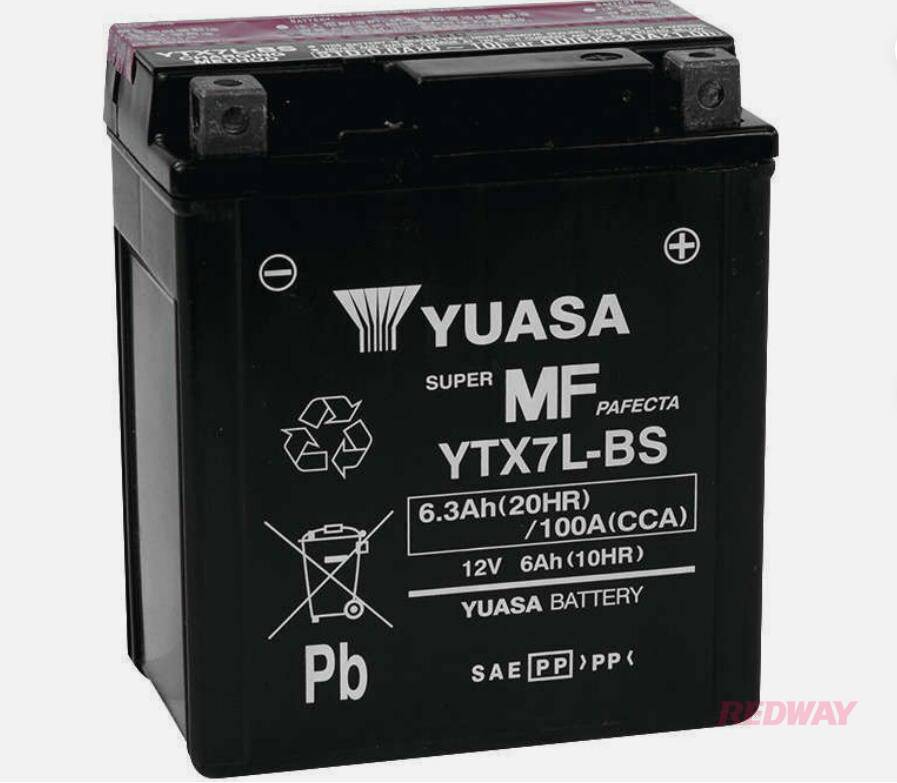
#post_seo_title
Where can I buy a motorcycle battery?
Motorcycle batteries are used not only for motorcycles but also for other vehicles, power generators, boats, and similar.
Thus, they are available in auto parts shops, workshops, dealerships, online stores, hardware stores, etc.
If You are not in a rush, ordering a battery from online shops, combined with fast delivery, is perhaps the easiest way of purchasing a new battery.
What are the best motorcycle battery brands?
Many battery brands offer good batteries at acceptable prices – some of these brands are Chrome, Deka, Duralast, EverLast, EverStart, Exide, Extreme Battery, Kinetik, Mighty Max, MotoBatt, PowerStar, Power-Sonic, Odyssey, SigmasTek, Weize, Yuasa, etc.
When looking for a new battery, go for the model with many good reviews – such batteries have already been tested by numerous users in real-life situations. If they were good for them, they will most probably be good for You too.
Conclusion
In order to prolong the operating life of your battery, it is good practice to get a smart AGM battery charger and recharge your lead-acid battery once or twice per year, even if the battery is almost fully charged.
Why? Well, before starting with the charging process, smart AGM battery chargers test the battery and charge it according to the battery condition. Also, smart AGM battery chargers are able to equalize the battery cells, stop and even reverse plate sulphation, and sometimes they can even recondition an almost dead battery.
When picking up new Powersports, ATVs, or motorcycle battery, be sure to check the exact type, model, size, terminal orientation, capacity, and CCA of your old battery, and choose a sealed AGM/Gel-cell battery that can fit your battery compartment and that offers the same or even better electrical and mechanical features
